Ten of our favourite early years problem-solving activities
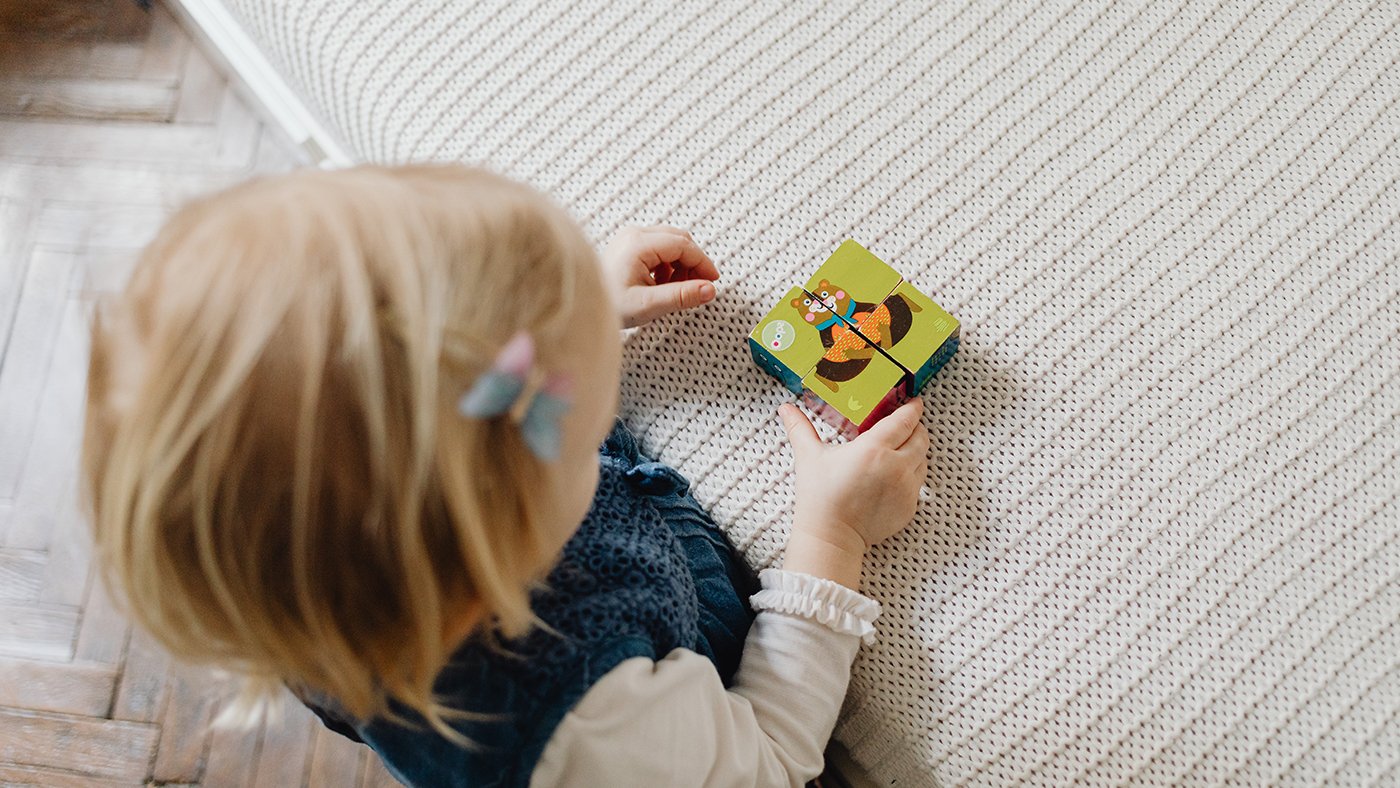
A lot of the time when we hear the term ‘problem-solving’, our brain jumps back to the tricky maths teasers from our school days, and we immediately recoil a little. However, problem-solving is much more than number conundrums.
Problem-solving is a key part of early years development and can support learning across many of the My First Five Years streams. The skill of problem-solving starts developing very early in a child's life and stems from the knowledge of the world that they are constantly building.[1]. For instance, your baby may cry when hungry as they know that crying gets the attention of an adult who can feed them.
Problem-solving is a part of everyday life for children, from being a baby through to their future adulthood. When children learn how to solve problems, it can support them in building resilience, self-confidence and self-esteem. Taking part in problem-solving activities with others can also help children develop social skills, communication and relationships.[2]
Psychologist Jean Piaget’s theory of cognitive development also focuses on the importance of problem-solving for early childhood development. In each developmental stage of his theory, the psychologist emphasised the importance of play-based learning for young children when it comes to problem-solving, and in turn building skills across the spectrum.[3]


Supporting problem-solving
When thinking about problem-solving activities for your child, it can be difficult to know where to begin.
To keep children engaged, enabling them to take the lead and follow their interests, is key. Play-based, hands-on learning makes acquiring new skills more interesting and memorable for young children.[4]
Many activities can support children when developing their problem-solving abilities – the possibilities are wide open. When considering which problem-solving activities are the most effective, it is also important to consider how they can be adapted to multiple interests, abilities and how accessible they are when it comes to using resources and materials.
To help you out, here are ten of My First Five Years’ favourite problem-solving activities that you can try with your child.
1) Den-building
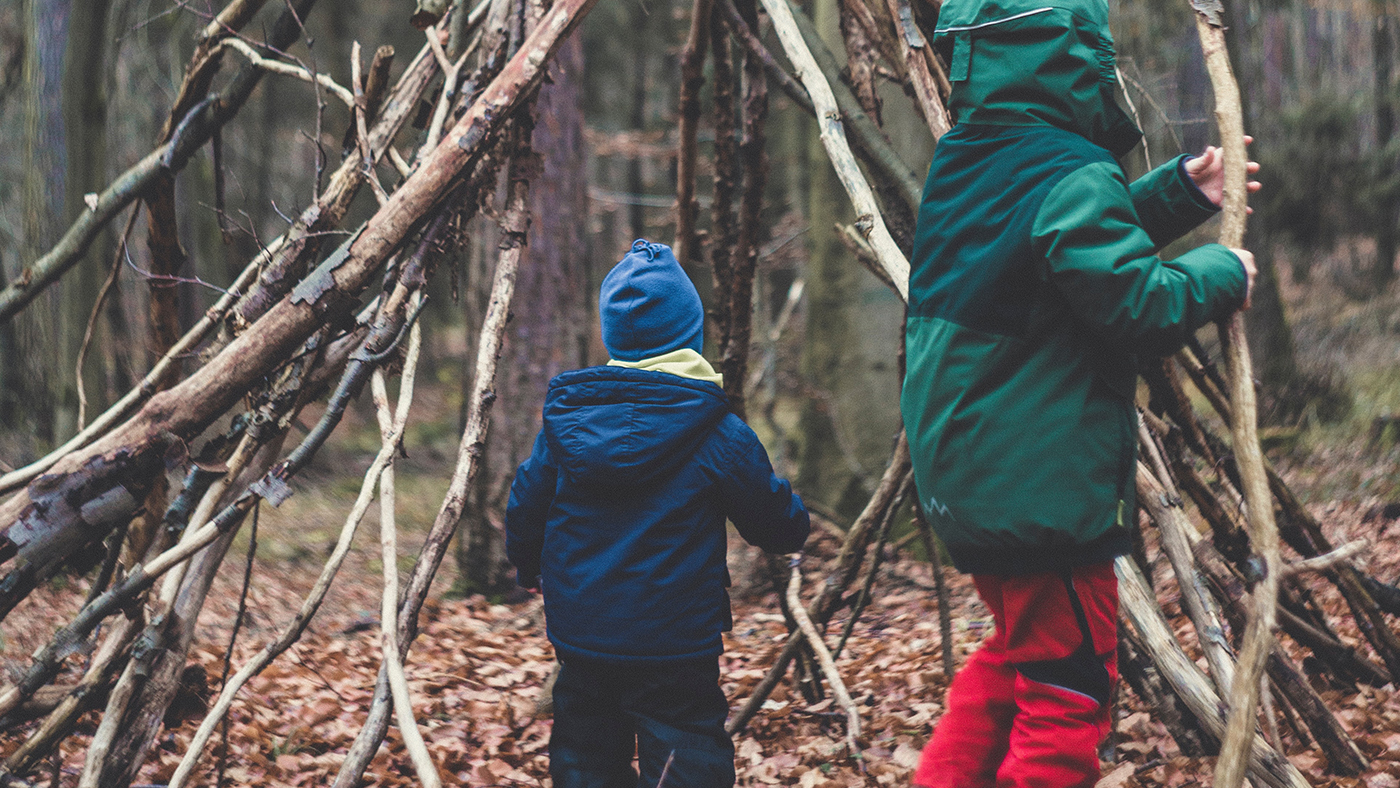
Den-building is brilliant for problem-solving as it requires creative and critical-thinking, foresight, and planning. It is also a wonderful way to promote sustained shared thinking with your child. Sustained shared thinking is a way of working together that encourages individuals to evaluate the problem that they are working on and is focused on collaboration, using experiences and prior knowledge.[5]
When building a den with your child, encourage your child to take the lead. You could provide materials such as boxes and blankets, or you could even ask your child to decide what materials you need before starting, encouraging them to plan out their work. Den-building can also be done both indoors and outdoors and with children from a young age. You may find that people have already started creating these in your local woodland that you can add to, adapt, or just enjoy!
2) Cooking and baking
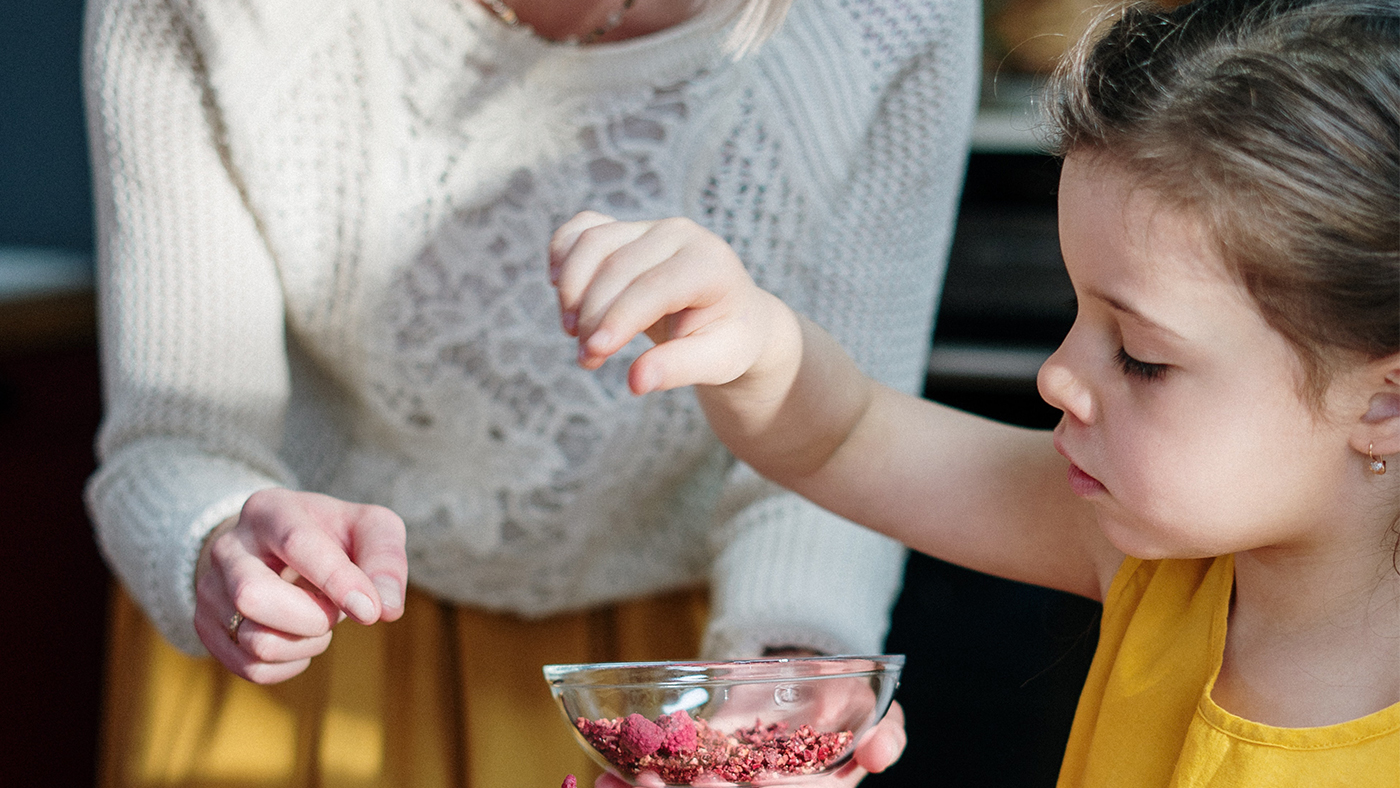
Cooking and baking are not only fun activities, but they also focus on mathematical problem-solving. To bring problem-solving into a cooking and baking activity, you can ask your child to count out simple measurements, for instance, cups of flour or sugar. Activities like cooking or baking are great for children to be able to take ownership of what is happening; encourage them to choose what you will make and allow them to do all the elements themselves.
What’s great about cooking is it really doesn't matter how it turns out! Problems can arise often in cooking or baking, for example, the mixture may turn out too dry, you may be an ingredient short, or your cakes might not rise how you expected them to. If this is the case, talk to your child about what might have gone wrong and how you can rectify it next time! Then when they come to do it again, they can use their prior knowledge to help them.
3) Playing with patterns
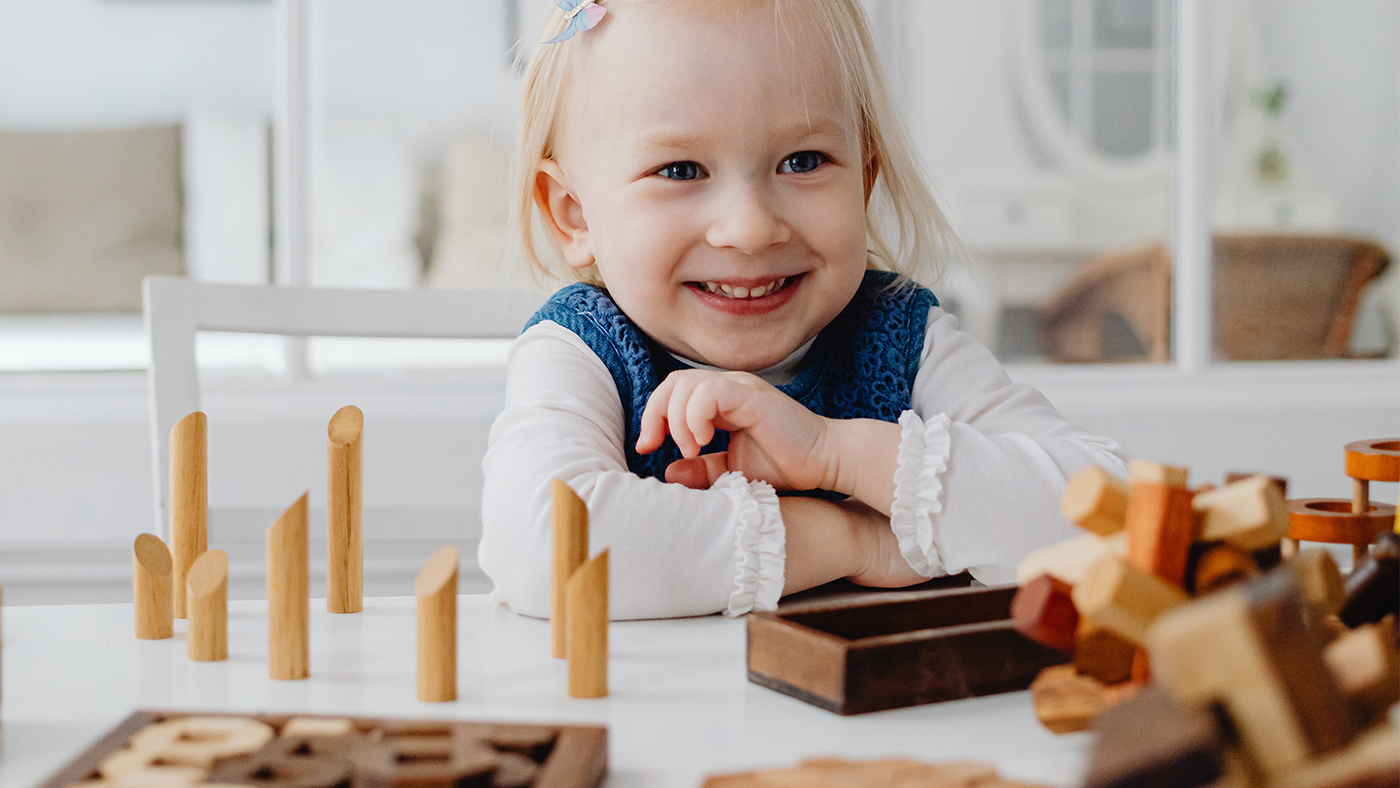
Patterns are a great activity for mathematical problem-solving. You can create patterns of any objects that you can find! For example, with pieces of fruit, pebbles from the garden, building blocks or even snacks! You could encourage your child to continue patterns, fill in the missing pieces or even create their own for you to solve problems with as they grow more confident.
4) Sorting and categorising
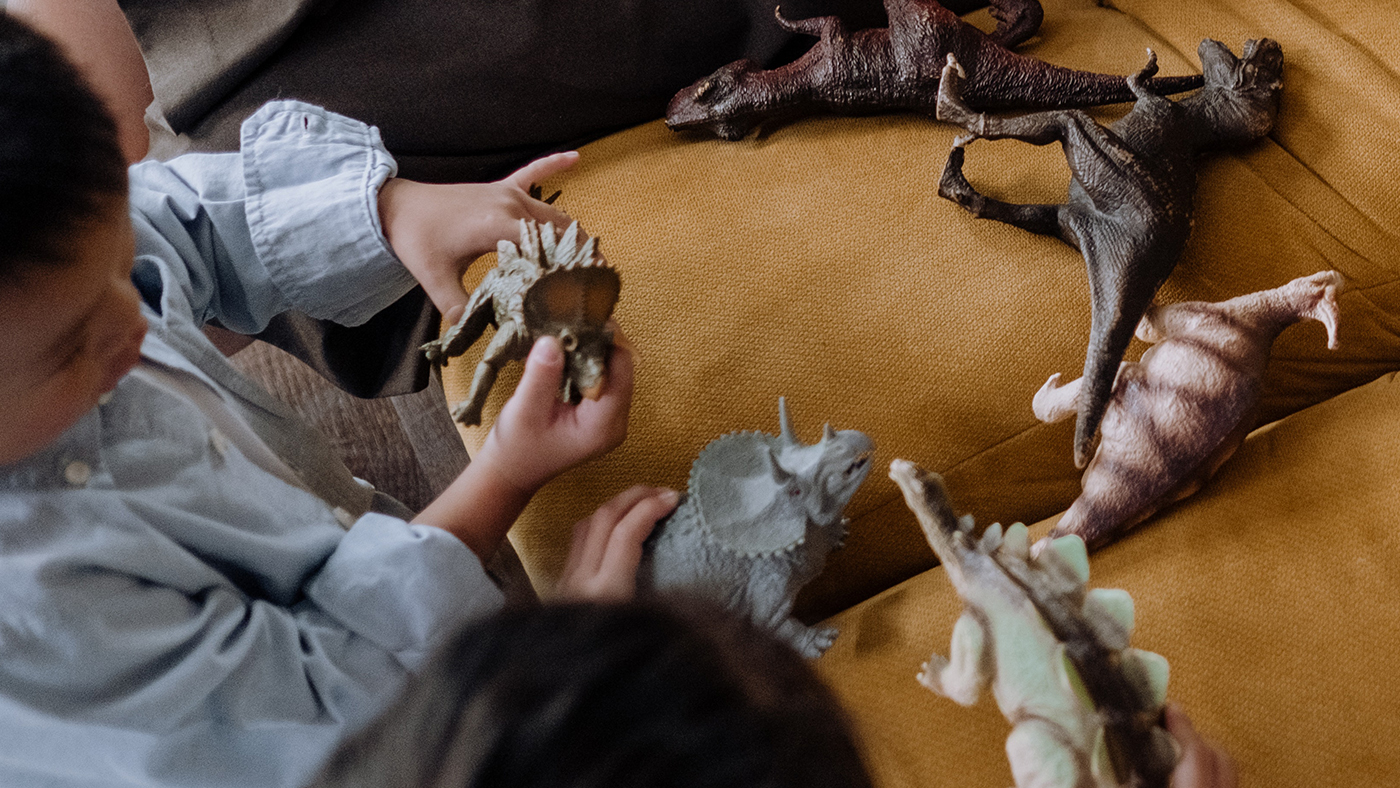
Sorting and categorising objects is an activity that supports children in mathematical problem - solving and can be easily adapted to individual children’s abilities . You could encourage your child to sort by shape, size, colour, or better yet , their interests . For example, if they are a dinosaur enthusiast, they could classify them by wh ich is their favourite or least favourite , or order them by the size of their feet. They may even find enjoyment in helping you with daily sorting such as recycling or washing!
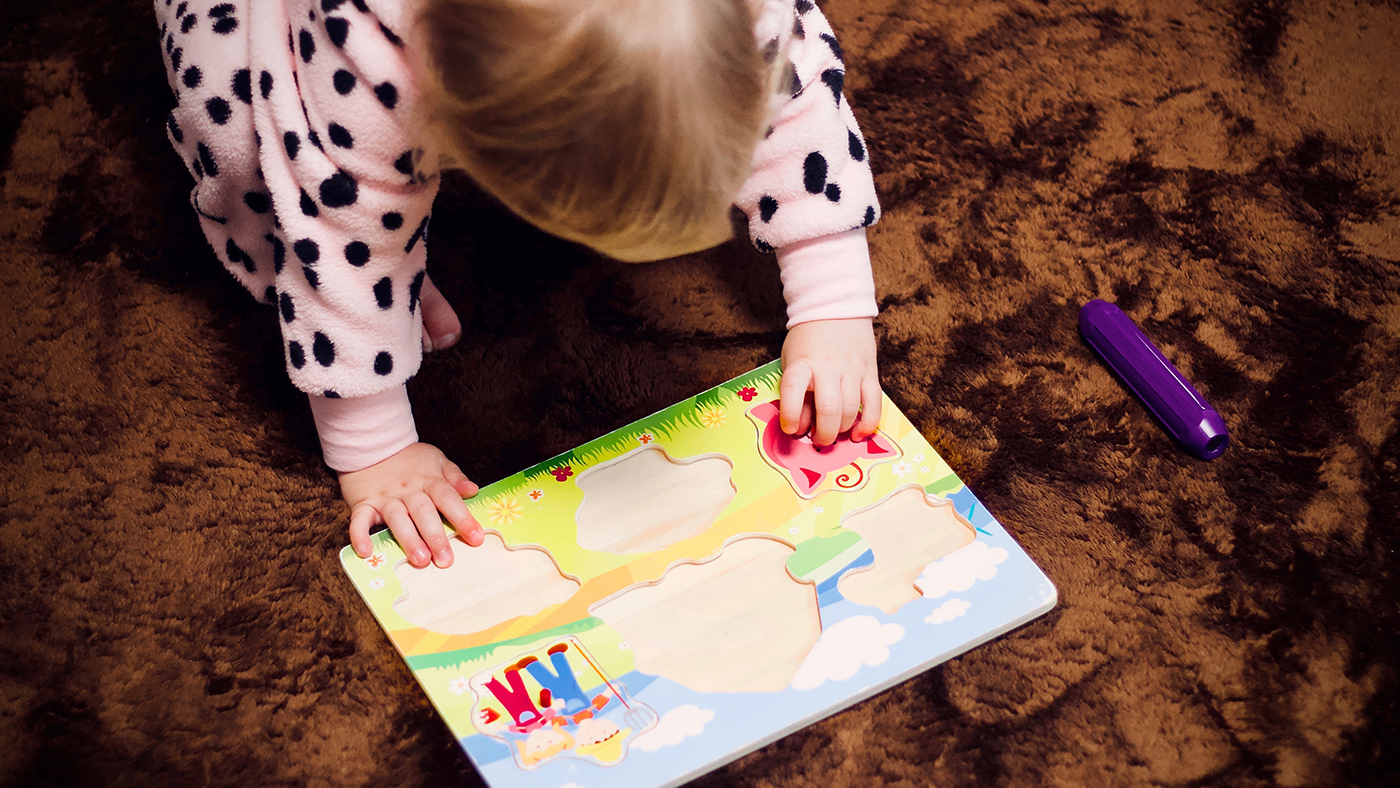
Puzzles are a fun resource that can be used with children from a very young age. There are a wide variety of puzzles for children to access , such as chunky wooden puzzles or traditional shape sorters. When playing with puzzles, children will have to use their prior knowledge and experience of shape, space and measure whil e also experimenting with different angles and placements. They will use trial and error to find the best way to complete the puzzle and then will use this knowledge in future attempts.
6) Ice rescue
As well as being a great problem-solving activity, ice rescue enables children to explore seasonal changes, temperatures and develop their fine and gross motor skills using tools. To play ice rescue, freeze toys inside ice overnight. This could be in cake moulds or small bowls. Use toys that will motivate your child, for instance, their favourite small figurines.
Once frozen, place your blocks of ice in a big bowl or tray, and encourage your child to think about how they can get the items out. You could provide tools, or even get your child to find tools themselves.
7) Obstacle courses
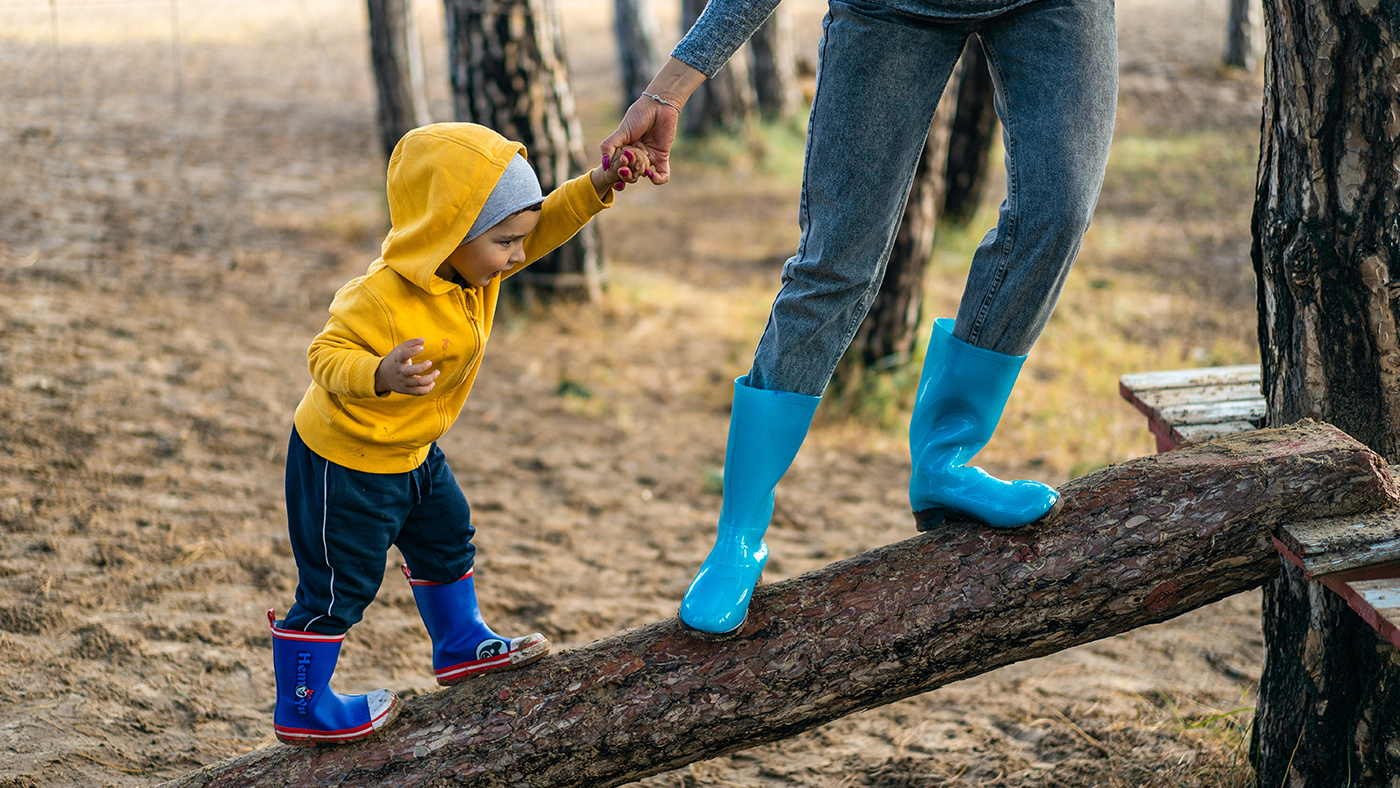
Obstacle courses are versatile and can be made with a wide variety of resources. When setting up an obstacle course for your child, try to include sections where your child will have to stop and think about how they will have to adapt their body to move through it , for example, something that they must climb over or under, or a section where they have to move differently. You could even include them in trying to create the obstacle course and allow them to make it the most challenging they can.
8) Filling, emptying and investigation
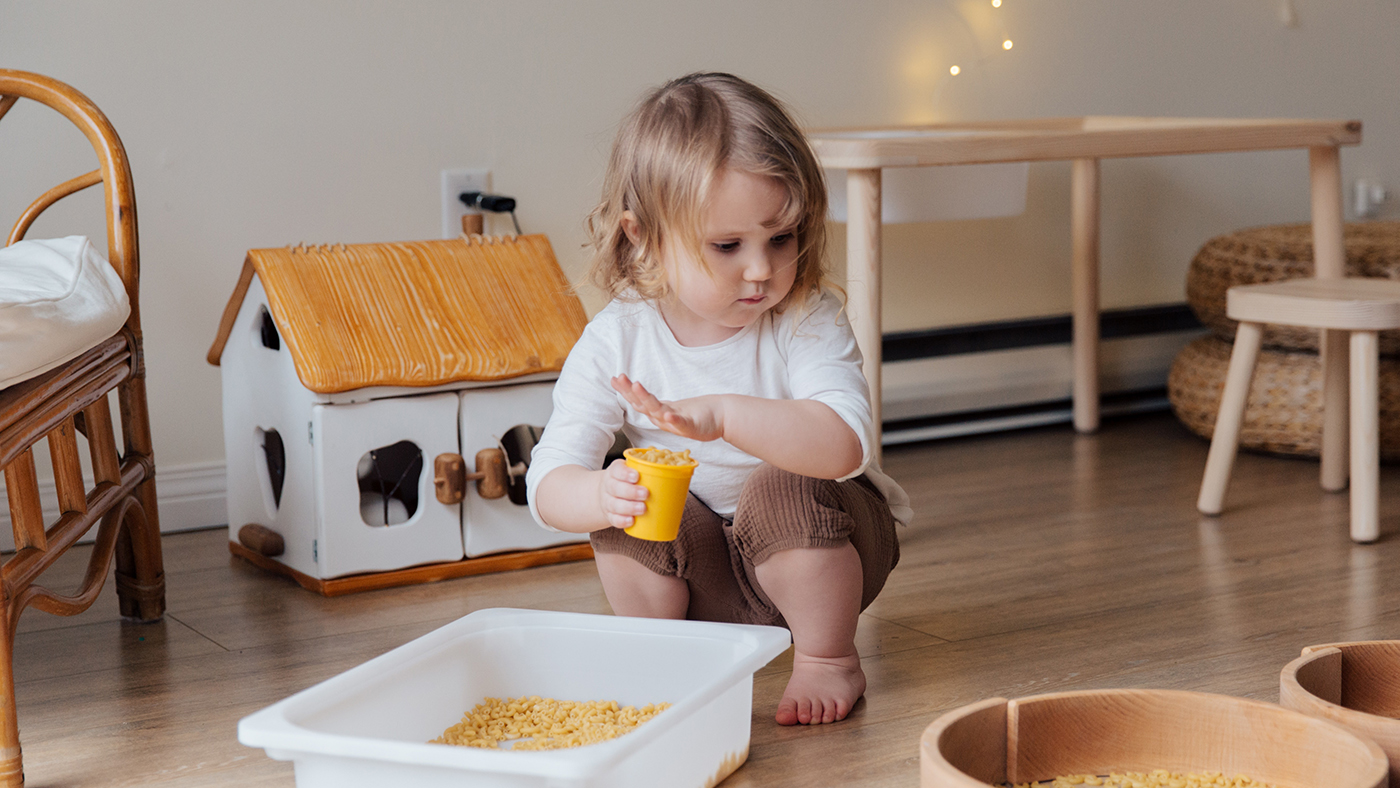
Many children enjoy filling and emptying during play. Investigating this way helps children to get a sense of size, capacity and explore predicting and estimation. For instance, if your child likes playing with sand, you could ask them to guess how many scoops they will need to fill a container, or if they like water play you could challenge them to find a way to move the water between two containers as quickly as possible , or from one tray to another.
9) Story problems
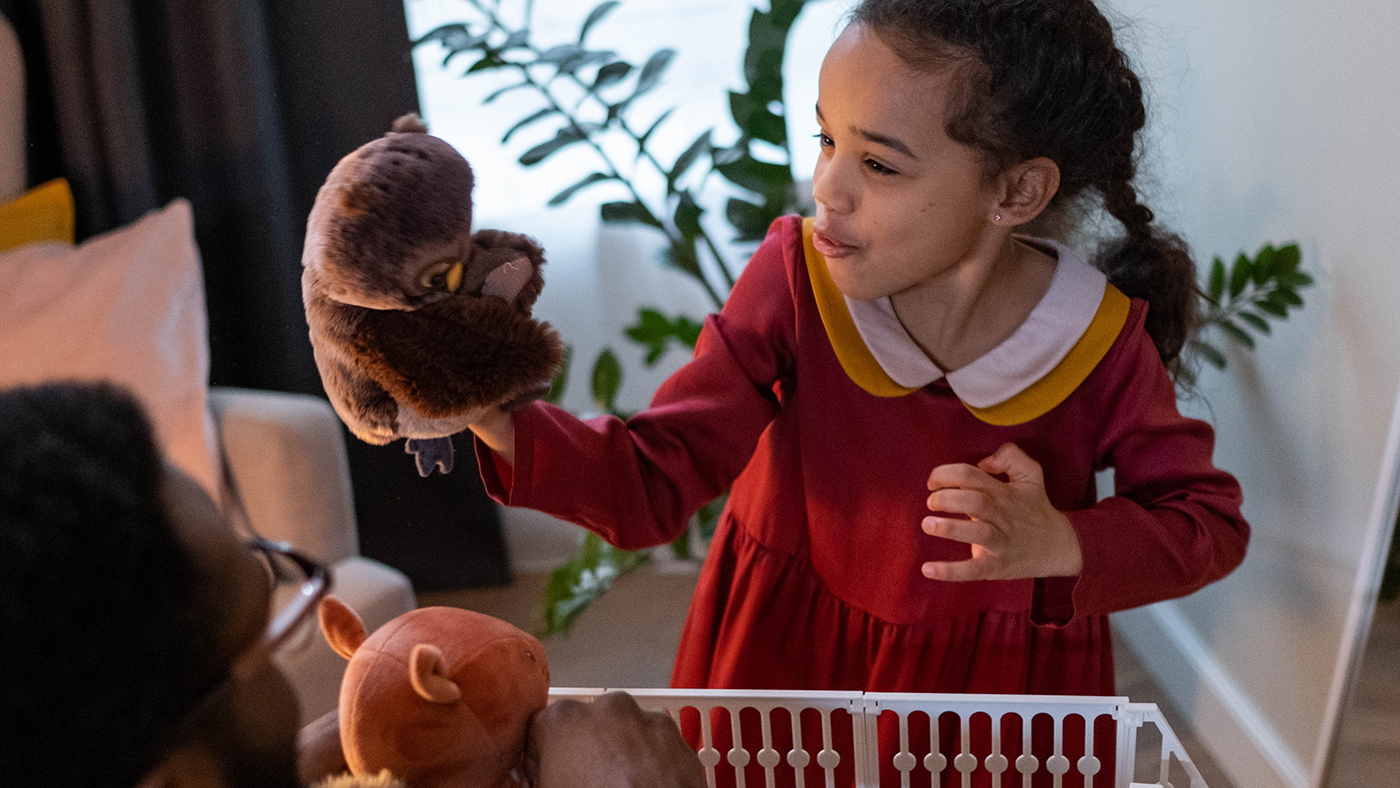
Stories are an effective way of introducing problem-solving and they can be a highly engaging way to promote creative and critical-thinking. You could use familiar or traditional stories to help scaffold play opportunities for your child. For example, you could try building a house for the three little pigs that cannot be knocked over. You could test out different methods using materials that you can find around your home.
If you are feeling creative, you could also make up a little story using your child’s favourite toys. An example of this could be figuring out how to share food between their favourite teddies during a picnic and making sure that everyone gets enough.
10) Playing with loose parts or open-ended resources
Natural materials such as leaves, conkers, sticks, acorns, and pinecones are all brilliant open-ended play opportunities (if supervised). You can also use household objects like bottle caps, curtain rings, tubes, tins, boxes, buttons etcetera in this sort of play. All it requires is a tray of different objects that you've collected and time to explore them. Your child will have to think creatively about how to utilise the objects and in doing so will be challenging their cognitive capacity by problem-solving to achieve the desired outcomes.
References
[1] Rachel Keen. (2011). The Development of Problem Solving in Young Children: A Critical Cognitive Skill. Available: https://www.annualreviews.org/doi/full/10.1146/annurev.psych.031809.130730#_i22 .
[2] Sheila Ebbutt. (2009). EYFS best practice - All about ... problem-solving . Available: https://www.nurseryworld.co.uk/features/article/eyfs-best-practice-all-about-problem-solving .
[3] Piaget, J. (1983). Piaget's Theory. In P. Mussen (ed). Handbook of Child Psychology. 4th edition. Vol. 1. New York: Wiley.
[4] Unicef. (2018). Learning Through Play. Available: https://www.unicef.org/sites/default/files/2018-12/UNICEF-Lego-Foundation-Learning-through-Play.pd .
[5] Kathy Sylva, Edward Melhuish, Pam Sammons, Iram Siraj-Blatchford and Brenda Taggar. (2004). The Effective Provision of Pre-School Education (EPPE) Project: Findings from Pre-school to end of Key Stage1. Available: https://dera.ioe.ac.uk/8543/7/SSU-SF-2004-01.pdf .
T&C's | Privacy Policy | Cookies
© Copyright 2023 - My First Five Years Ltd.
- Teach Early Years
- Teach Primary
- Teach Secondary
- Technology & Innovation
- Advertise With Us
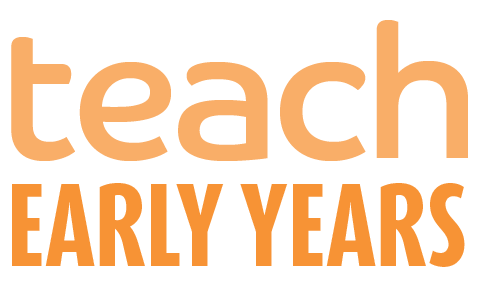
- Free Reports
- Have You Seen
- Learning & Development
- A Unique Child
- Enabling Environments
- Positive Relationships
- Nursery Management
Home > Learning & Development
Learning and Development
Maths problem-solving – Activities for Early Years settings
- Written By: Judith Dancer
- Subject: Maths
Share this:
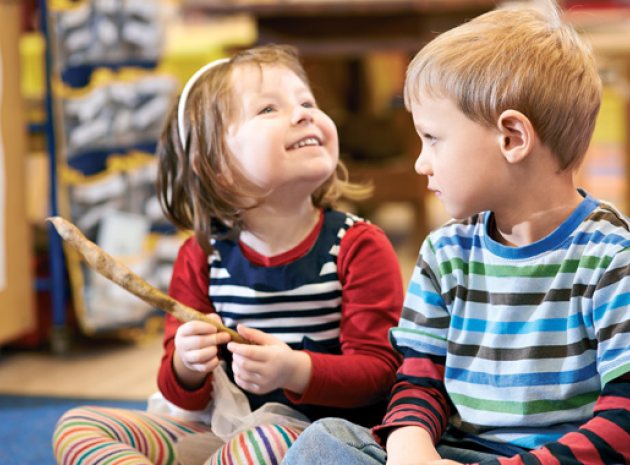
Critical thinking doesn’t have to be a daunting prospect. There are simple, effective and exciting ways to encourage children’s maths problem-solving skills, says Judith Dancer…
Maths is a subject many adults lack confidence in. Having struggled with it at school they often avoid it, wherever possible, when grown up.
But if maths seems scary for some people, then maths problem-solving can cause even more anxiety. There is no ‘safety net’ of knowing the ‘correct answer’ beforehand. This is because maths problem-solving lends itself to investigation and exploration with lots of possible tangents.
Understandably this is often the area of maths where many practitioners feel least confident. However, young children, who are not restrained by right answers, feel the most enthused and animated.
The non-statutory Development Matters Guidance , as part of ‘creating and thinking critically’ in the Characteristics of Effective Learning, identifies that practitioners need to observe how a child is learning, noting how a child is:
- thinking of ideas;
- finding ways to solve problems;
- finding new ways to do things;
- making links and noticing patterns in their experience;
- making predictions;
- testing their ideas;
- developing ideas of grouping, sequences, cause and effect;
- planning, making decisions about how to approach a task, solve a problem and reach a goal;
- checking how well their activities are going;
- changing strategy as needed;
- reviewing how well the approach worked.
All of these elements are, at one time or another, part of the problem-identifying and solving process – although not at the same time and in the same problem.
Role of the adult
Maths problem-solving for young children involves them understanding and using two kinds of maths:
- Maths knowledge – learning and applying an aspect of maths such as counting, calculating or measuring.
- Maths thinking skills – reasoning, predicting, talking the problem through, making connections, generalising, identifying patterns and finding solutions.
The best maths problems for children are the ones that they identify themselves. They will be enthused, fascinated and more engaged in these ‘real’, meaningful problems.
Children need opportunities to problem-solve together. As they play, they will often find their own mathematical problems.
One of the key roles of practitioners is to provide time, space and support for children. We need to develop situations and provide opportunities in which children can refine their maths problem-solving skills and apply their mathematical knowledge.
Supporting maths problem-solving
You can effectively support children’s developing maths problem-solving strategies through:
- Modelling maths talk and discussion – language is part of maths learning because talking problems through is vital. Children need to hear specific mathematical vocabulary in context. You can promote discussion through the use of comments, enabling statements and open-ended questions.
- Providing hands-on maths problem-solving activities across all areas of the setting. Children learn maths through all their experiences and need frequent opportunities to take part in creative and engaging experiences. Maths doesn’t just happen in the maths learning zone!
- Identifying potential maths learning indoors and outdoors. Provide rich and diverse open-ended resources that children can use in a number of different ways to support their own learning. It is important to include natural and everyday objects and items that have captured children’s imaginations, including popular culture.
Maths problem-solving possibilities
Spell it out.
This experience gives children lots of opportunities to explore calculating, mark making, categorising and decisions about how to approach a task.
What you need to provide:
- Assorted containers filled with natural materials. This includes leaves, pebbles, gravel, conkers, twigs, shells, fir cones, mud and sand. Include some ‘treasure’ – sequins, gold nuggets, jewels and glitter.
- Bottles and jugs of water, large mixing bowls, cups, a ‘cauldron’, small bottles, spoons and ladles.
- Cloaks and wizard hats.
- Laminated ‘spells’ – e.g. “To make a disappearing spell, mix 2 smooth pebbles, 2 gold nuggets, 4 fir cones, a pinch of sparkle dust, 3 cups of water”.
- Writing frameworks for children’s own spell recipes and a shiny ‘Spell Book’ to stick these in.
- Temporary mark-making opportunities such as chalk on slate.
The important thing with open-ended maths problem-solving experiences like this is to observe, wait and listen. Then, if appropriate, join in as a co-player with children, following their play themes.
So if children are mixing potions, note how children sort or categorise the objects. What strategies do they use to solve problems? What happens if they want eight pebbles and they run out? Observe what they do next.
When supporting children’s maths problem-solving, you need to develop a wide range of strategies and ‘dip into’ these appropriately. Rather than asking questions, it is often more effective to make comments about what you can see. For example, say, “Wow, it looks as though there is too much potion for that bottle”.
Acting as a co-player offers lots of opportunities to model mathematical behaviours. This might include reading recipes for potions and spells out loud, focusing on the numbers – one feather, three shells…
Going, going, gone
We all know that children will engage more fully when involved in experiences that fascinate them. If a particular group has a real passion for cars and trucks , consider introducing maths problem-solving opportunities that extend this interest.
This activity offers opportunities for classifying, sorting, counting, adding and subtracting, among many other things.
- Some unfamiliar trucks and cars and some old favourites. Ensure these include metal, plastic and wooden vehicles that can be sorted in different ways.
- Masking tape and scissors.
- Sticky labels and markers.
Mark out some parking lots on a smooth floor, or huge piece of paper using masking tape. Lining paper is great for this. Line the vehicles up around the edge of the floor area.
Encourage one child to select two vehicles that have something the same about them. Ask the child, “What is the same about them?”.
When the children have agreed on what is the same – e.g. size, materials, colour, lorries or racing cars – the child selects a ‘parking lot’ to put the vehicles in. So this first parking lot could be for ‘red vehicles’.
Another child chooses two more vehicles that have something the same. Do they belong in the same ‘parking lot’, or a different parking lot? E.g. these vehicles could both be racing cars.
What happens when a specific vehicle could belong in both lots? E.g. it could belong in the set of red vehicles and also belongs in the set of racing cars.
Support the children as they discuss the vehicle. Make new ‘parking lots’ with masking tape and create labels for the groups, if you choose.
Observe children’s strategies
It’s really important to observe the strategies the children use. Where appropriate, ask the children to explain what they are doing and why.
If necessary, introduce and model the use of the vocabulary ‘the same as’ and ‘different from’. Follow children’s discussions and interests. If they start talking about registration plates, consider making car number plates for all the wheeled toys outdoors.
Do the children know the format of registration plates? Can you take photos of cars you can see in the local environment?
Camping out
Constructing camps and dens outdoors is a good way to give children the opportunity to be involved in lots of maths problem-solving experiences and construction skills learning. This experience offers opportunities for using the language of position, shape and space, and finding solutions to practical problems.
- Materials to construct a tent or den such as sheets, curtains, poles, clips and string.
- Rucksacks, water bottles, compasses and maps.
- Oven shelf and bricks to build a campfire or barbecue.
- Buckets and bowls and water for washing up.
Encourage the children to explore the resources and decide which materials they need to build the camp. Suggest they source extra resources as they are needed.
Talk with the children about the best place to make a den or erect a tent and barbecue. During the discussion, model the use of positional words and phrases.
Follow children’s play themes. This could include going on a scavenger hunt collecting stones, twigs and leaves and going back to the campsite to sort them out.
Encourage children to try different solutions to the practical problems they identify. Use a running commentary on what is happening without providing the solution to the problem.
Look for opportunities to develop children’s mathematical reasoning skills by making comments such as, “I wonder why Rafit chose that box to go on the top of his den.”
If the children are familiar with traditional tales, you could extend this activity by laying a crumb trail round the outdoor area for children to follow. Make sure that there is something exciting at the end of the trail. It could be a large dinosaur sitting in a puddle, or a bear in a ‘cave’.
Children rarely have opportunities to investigate objects that are really heavy. Sometimes they have two objects and are asked the question, “Which one is heavy?” when both objects are actually light.
This experience gives children the chance to explore really heavy things and measures (weight). They also need to cooperate and find new ways to do things.
- A ‘building site’ in the outdoor area. Include hard hats, builders’ buckets, small buckets, shovels, spades, water, sand, pebbles, gravel, guttering, building blocks, huge cardboard boxes and fabric (this could be on a tarpaulin).
- Some distance away, builders’ buckets filled with damp sand and large gravel.
- Bucket balances and bathroom scales.
With an open-ended activity such as this, it is even more important to observe, wait and listen as the children explore the building site and the buckets full of sand and gravel.
Listen to the discussions the children have about moving the sand and the gravel to the building site. What language do they use?
Note the strategies they use when they can’t lift the large buckets. Who empties some of the sand into smaller buckets? Who works together collaboratively to move the full bucket? Does anyone introduce another strategy, for example, finding a wheelbarrow or pull-along truck?
Where and when appropriate, join in the children’s play as a co-player. You could act in role as a customer or new builder. Ask, “How can I get all this sand into my car?”. “How much sand and gravel do we need to make the cement for the foundations?”.
Extend children’s learning by modelling the language of weight:
- heavy/heavier than/heaviest
- light/lighter than/lightest
- about the same weight as/as heavy as
- balance/weigh
Judith Dancer is an author, consultant and trainer specialising in communication and language and mathematics. She is co-author, with Carole Skinner, of Foundations of Mathematics – An active approach to number, shape and measures in the Early Years .
You may also be interested in...
- Great ways to support communication, language and literacy
- How to provide outstanding learning in the outdoors
- Award winners announced
Subscribe to Our Newsletter
I agree to the Terms & Conditions and Privacy & Cookies Policy.
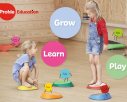
Enhance your children’s learning environment with unique products from Profile Education
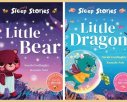
Review – Sleep Stories
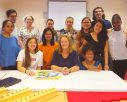
Enrol now for courses with Modern Montessori International
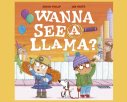
Wanna See a Llama? – picture book
View all Top Products
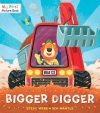
Bigger Digger
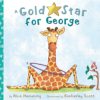
A Gold Star For George

Sammy goes flying
Recommended for you....

Early years resources found in our natural environment

Boost your kids’ fitness with dance and movement
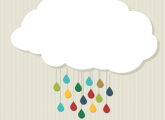
Puddle Painting
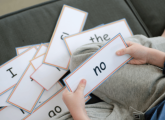
Learning to read – Why phonics isn’t the be-all and end-all
Editors picks


10 fun maths activities and games for the EYFS
With Famly since
Maths in the early years is a crucial stepping stone for developing children, which is why it’s so important that the little ones can explore and experience it in an enjoyable way. We’ve carefully chosen some fun maths games and resources to promote early learning of numbers through play.
Want to see how it’s done? Click here to watch the video of our five favourite activities ⏯

1. Combine mathematical skills with fine-motor skills.
Number Hunt in Jelly by Hazeldene Family Centre
This fun maths activity:
First, spread out some plastic numbers in jelly layers. When it’s all set, give out some tongs to children and show them how to pick up the numbers from the wiggly substance ( and practice their fine motor skills along the way! ). This sensory play is a great way of sneaking in number recognition into some sensory play.
What you need:
- Plastic Numbers

2. How do you make maths activities fun? Add Lego!
DIY Lego Pattern Cards by A Crafty Living
This fun maths game:
Lego. Useful in so many different ways , including making mathematics exciting. Prepare some cards with colourful blocks on them and let children discover colour patterns and reproduce them with LEGO bricks. Consider leaving the colouring part to your little learners so they can form their own patterns and include some EAD in the mix too. It's a win-win!
- Paper Cards
- Coloured Pencils
- LEGO Blocks

3. Challenge the children's maths skills to solve a missing number mystery
Missing Number Math Activity by Planning Playtime
This Early Years maths game:
Write number sequences on craft sticks and remember to leave some blanks in between. Next, you write the missing numbers on some clothes pins and give them out to the players. Now the children use their fine-motor skills and clip the pins on sticks and complete the sequence. The best thing about this fun and inexpensive maths game is that you only create the props once and they’re ready to be used as many times as you like.
- Craft Sticks (colour or plain)
- Clothes Pins

4. A simple game of swat the number.
Smack the Number Counting Game by Fun Learning for Kids
Prepare some sticky notes with various numbers and place them in front of the children armed with fly swatters. Roll the dice to get your target number. The goal of this simple yet fun game is for the little ones to identify the number on the dice and match it with the ones written on sticky notes by smacking the correct answer with a fly swatter!
- One or two dice
- Fly swatter
- Sticky notes

5. Playing with pom-poms to promote problem-solving skills
Straw and Pom Poms Counting Game by Nurture Store
Label small containers with some numbers that you’d like your learners to practice and prepare some straws and pom poms. For this fun maths activity, the kids simply put the straw on a pom-pom and suck in, to try and pick it up. Then they drop it over the containers until they’ve got the right number in each one.
- Shallow containers
- Labelled stickers (or any paper, glue and marker)
Get 50 free EYFS activities
.png)
6. A fun maths game to drive you dotty!
Number Dots and Easy Touch And Count Activity by Busy Toddler
Tape some paper to the wall and write several numbers, each decorated with dots, to match the quantity the number represents e.g. 4 dots on the number 4. Now, the players can touch each dot with a marker and see the number and the quantity altogether! You can also put the paper on the floor but holding a marker up and out makes this not only a fun game for early years maths but also a good way to strengthen those little arm muscles.
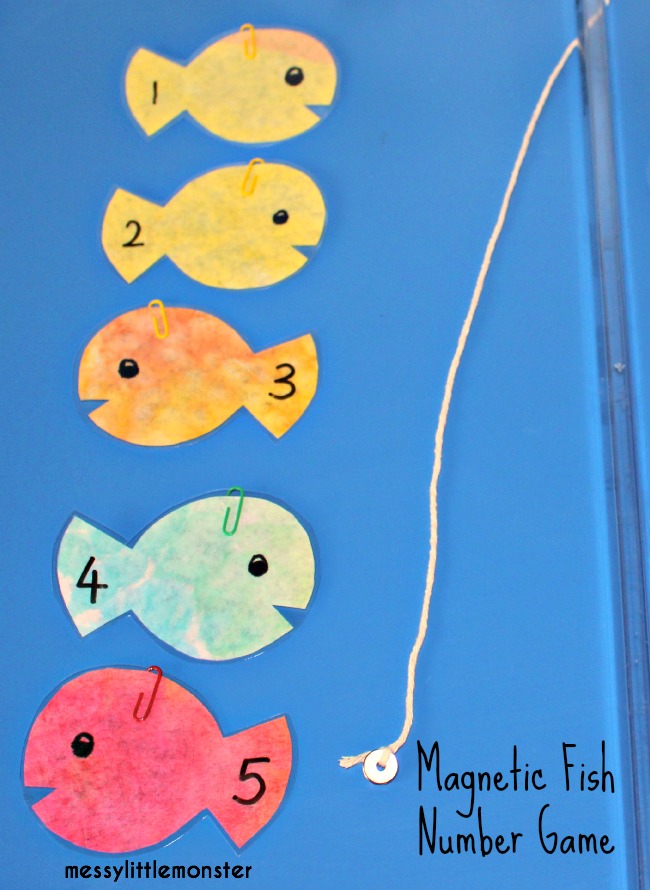
7. A magnetic, mathematical, magical fishing game
Magnetic fishing number game by Messy Little Monster
This Early Years maths activity:
First, you or the children need to cut your paper into fish shapes and add a paperclip. Next, write the numbers on the fish using a pen. For the fishing rod, tie some string (with a magnet on the end) to your stick! Now the whole class can 'fish' for numbers!
- Card/ Paper (or old pieces of artwork) to cut into fish shapes
- Paper clips
- Magnets, preferably some too large to be swallowed.
- Stick or long piece of wood
N.B. Always supervise children very carefully with magnets.

8. Fun maths activities are eggs-actly what we're looking for!
Egg Cracking Counting Activity by Modern Preschool
Looking to 'hatch' a plan for some fun maths games? Create ‘eggs’ by cutting out oval shapes from cardboard and writing different numbers on them. Students identify the numbers and 'crack the eggs' by punching the corresponding number of holes in them - you could always make one first, as an example. This exercise can also help develop muscles in those minute hands.

9. More fun in maths? Make it musical!
Top 10 Counting Songs by Super Simple Songs – Kids Songs
According to the BBC “When children are singing they are taking in information and training the brain but they don’t think they are, they think they are just having fun. Singing is an aerobic activity that boosts oxygenation in the bloodstream, increasing mental alertness”. We agree! Check out these 10 lovely songs to give it a go.
- A way to play music
- Your voice!

10. Matching with maths - a classic game with a mathematical twist.
Valentine Math Activity – Broken Heart Numbers by Fun a Day
Sometimes the most fun games are the classics. A simple matching game for one player, two players, or the whole classroom! Simply cut out some hearts and cut each in half using different zigzags, squiggles and other connecting shapes. Then write a number on one side and draw a corresponding number of hearts on the other. Well done, you’ve just created puzzles! Challenge the children to see who can find the matching hearts card to their number cards.
- Paper or card
Whoops! Looks like you need to accept marketing cookies to see this video. Don’t worry - they’re fresh out the oven.
The big ideas
Official Danish Government Reopening Advice
Guidance from the Danish Health Ministry, translated in full to English.
.jpg)
UK Nursery Covid-19 Response Group Recommendations
The full recommendations from a working group of over 70 nursery chains in the UK.
Please note: here at Famly we love sharing creative activities for you to try with the children at your setting, but you know them best. Take the time to consider adaptions you might need to make so these activities are accessible and developmentally appropriate for the children you work with. Just as you ordinarily would, conduct risk assessments for your children and your setting before undertaking new activities, and ensure you and your staff are following your own health and safety guidelines.

Matt Arnerich
Matt Arnerich is Famly's Director of Brand & Comms. He looks after the story of what makes Famly different, helping us to get closer to our mission.
You might also like

10 EYFS Literacy Activities to Make Development More Fun
Zuzanna Stańczewska
July 26, 2017

10 green ideas to explore gardening with children
Marcus Fogg
April 28, 2021

The EYFS Activity Library: 50 EYFS Activities
August 18, 2023
Get 1000s of free EY activities
Want over 7,000 activities? See them in a free 14-day trial. Filter to target learning areas, age groups and topics, and get inspired.
.png)

Or search by topic
Number and algebra
- The Number System and Place Value
- Calculations and Numerical Methods
- Fractions, Decimals, Percentages, Ratio and Proportion
- Properties of Numbers
- Patterns, Sequences and Structure
- Algebraic expressions, equations and formulae
- Coordinates, Functions and Graphs
Geometry and measure
- Angles, Polygons, and Geometrical Proof
- 3D Geometry, Shape and Space
- Measuring and calculating with units
- Transformations and constructions
- Pythagoras and Trigonometry
- Vectors and Matrices
Probability and statistics
- Handling, Processing and Representing Data
- Probability
Working mathematically
- Thinking mathematically
- Mathematical mindsets
- Cross-curricular contexts
- Physical and digital manipulatives
For younger learners
- Early Years Foundation Stage
Advanced mathematics
- Decision Mathematics and Combinatorics
- Advanced Probability and Statistics
Early Years Foundation Stage Activities
Explanation of Our EYFS Format
Here you can find out more about how we structure our EYFS activities.
Early Years Activities - Number
Early Years Activities - Measures
Early Years Activities - Shape and Space
Early Years Activities - Pattern
- Teaching & Learning
- Early Years
Problem-solving in early maths: 3 simple teaching tips
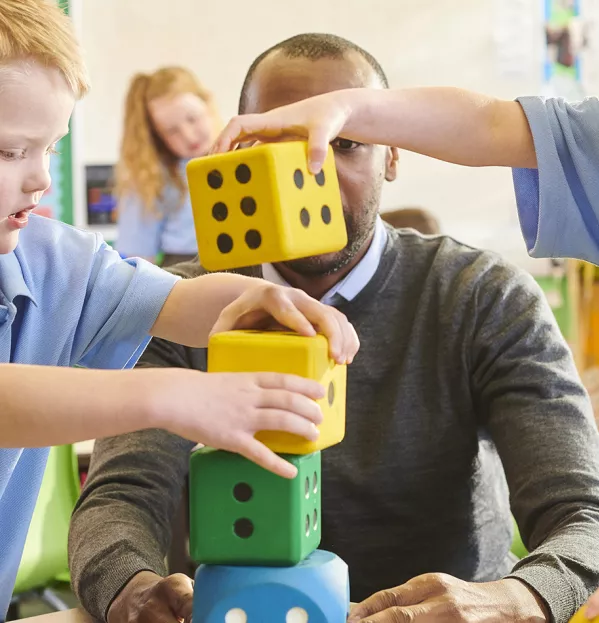
E d has made an enclosure for dinosaurs using four wooden blocks. He wants to make sure the dinosaurs can’t escape.
“Interesting, I can see the dinosaurs are all locked inside the enclosure,” says Ed’s teacher, “but the tyrannosaurus rex is very tall. I think it would be able to climb out? Is there something you could do to stop him escaping?”
Ed fetches four more blocks and stacks them on top of his enclosure, making it taller.
“Good thinking, Ed,” says the teacher, “but we can still see his head, so it might need to be taller. There are no more long blocks for you to use. I wonder what you could use instead?”
“I think lots of these shorter ones might fit on the top,” says Ed.
- What would “phonics for maths” look like?
- Is this the “right” way to teach early maths?
- How to develop number sense
There are frequent opportunities for mathematical problem-solving throughout a typical day in an early years setting. But how can we ensure that we maximise their impact when they arise?
The Education Endowment Foundation’s Early Years Evidence Store identifies approaches that educators can use to support young children’s early maths learning and development, while providing a summary of the evidence behind each approach.
Created as part of the EEF’s work supporting the Department for Education’s Stronger Practice Hubs, the store has been co-developed by researchers and educators.
The newly published Early Mathematics theme recommends five approaches for supporting children’s maths development:
- Teaching the association between number and quantity.
- Promoting fluency with numbers and sequences.
- Teaching problem-solving skills for maths.
- Teaching and modelling how to make comparisons and connections.
- Facilitating mathematical language.
If we look at the third approach, teaching problem-solving skills for maths, this covers how we teach children to apply purposeful thinking, communicate their ideas and use manipulatives to solve problems.
Strategies for teaching early mathematical problem-solving skills
Evidence and experience tell us that explicitly teaching problem-solving skills can be effective when combined with other approaches, especially when matched to children’s level of development.
A multi-pronged approach is particularly important for children from lower-income families or those at greater risk of not meeting expected levels of development. Sequencing learning and breaking tasks down, as well as modelling problem-solving strategies, can also help to improve outcomes.
But what does that look like in practice?
1. Thinking aloud
In the example at the start of this article, Ed’s teacher models her mathematical thinking aloud, encouraging Ed to do the same. Deliberate modelling, meanwhile, provides opportunities for the teacher to suggest additional challenges for Ed’s play in manageable chunks.
2. Modelling using representations to solve a mathematical problem
Educators can encourage children to use representations in different contexts to scaffold understanding.
This could be through using drawings, fingers or objects, such as pinecones or cubes. For example:
Ben is playing with a friend in the mud kitchen. They plan to make “fir cakes” for the teddy bears they have set up on the picnic bench.
Their teacher asks them how many cakes they will make. Ben tells her, “Four, so there is one each.” Andrea encourages Ben to use his fingers to check this, as she points to each teddy.
The teacher counts aloud as Ben lifts each finger, stopping at five.
“I need five cakes then,” Ben says.
“Yes,” the teacher agrees, “you need one more cake, and then there is one for each teddy”.
3. Reminding
Educators can prompt children to remember and apply a previous strategy to solve a mathematical problem. For example:
During welcome time, the teacher asks the class how they can find out how many children are here today, using their self-registration board.
“We can count them,” says Amrita.
“Yes, you are right; we can count the children. Is there a way we can do it that helps us count them correctly?”
The children aren’t sure, so the teacher reminds them: “If we move the photos one by one into the basket as we count, it’ll make sure we only count each photo once.”
Amrita then moves the photos one at a time into the basket as the children count in chorus to work out how many children are at nursery today.
Lauren Grocott is an early years specialist for the Education Endowment Foundation (EEF)
For more examples of how to teach problem-solving, including narration and using mistakes as teaching and learning opportunities, visit the Early Maths theme of the Early Years Evidence Store
You need a Tes subscription to read this article
Subscribe now to read this article and get other subscriber-only content:.
- Unlimited access to all Tes magazine content
- Exclusive subscriber-only stories
- Award-winning email newsletters
Already a subscriber? Log in
You need a subscription to read this article
Subscribe now to read this article and get other subscriber-only content, including:.
topics in this article

Play of the Wild
Education is an admirable thing, but it is well to remember from time to time that nothing that is worth knowing can be taught. -Oscar Wilde

Outdoor Maths Activities EYFS – Outdoor Maths Ideas

The following are some of my favourite outdoor maths ideas & activities for EYFS (Early Years – Children aged approximately 2-5). For outdoor maths activity ideas for older children, you may want to see my post, Outdoor Maths Activities KS1 .
Young children need to be able to manipulate and use hands-on materials to explore mathematical thinking. Using manipulatives and representing mathematical ideas in many different ways allows children to develop a deeper understanding and to make connections between different areas of maths. Children need to be able to use objects to help them with counting and with the representation of numbers. This will help them begin to solve simple arithmetic problems so that they can develop strong mathematical skills (Anghileri, 2006).
Children will gain a deeper understanding of mathematical concepts and how different areas interrelate if they are given hands-on opportunities to explore (Carruthers & Worthington, 2004). In the long-term, this will help them develop confidence in maths, as well as allow them to apply their learning to problem solve. These outdoor maths activities for EYFS will help make connections and reinforce classroom learning.
Outdoor Maths Activities & Ideas EYFS
I have grouped theses outdoor maths activities & ideas based on different areas of learning for EYFS (Early Years Foundation Stage). They are primarily for children ages 2-5, but they can be adapted for older children as well.
*Please note that this post contains affiliate links to help with the running cost of this website. Thank you for your support so that we can keep writing!
Number & Place Value (including counting)
Cardinality.
- Counting natural objects –counting out how many you have in total and matching the total to a numeral (you may use numicon to help scaffold counting).

- Nature hunt – Children can search for a set number of different natural objects. Ex. Children might search for 5 pinecones, 4 sticks, 3 stones, 2 leaves and 1 feather.
- Number hunt – children can search for numerals, groups of objects, and/or dice or other value representations of numbers hidden outside. They can then match different representations of the same number together (and even order them).

- Tens frame – Children can use an outdoor ten frame to count objects (and begin to subitise). They can place the same number on the frame in different ways (and recount). Doing this will help them see that 5, for example, may look different but still be 5. How many do you have? What if you place them like this- how many are there now? How do you know?
- Stone stacking – Children can make stone towers and count the total. It is also an excellent way for children to explore balance and centre of gravity.

- Games – Children can play games such as ‘What’s the time Mr Wolf’ to practice counting steps.
- Counting in play – Adults can encourage children to count as they play and explore. For example, How many steps does it take to cross a bridge? Can you count how many hops it takes to get from one point to another? How many steps to the top? Etc. Alternatively, you could roll large dice and children can count/do that many claps, hops, etc.
- Transient art & counting – Get children to create a picture using 5 or 10 objects. They can do this individually, or they can work collaboratively.

- Mathematical language – Find ways to use mathematical language with children as you are out and about- e.g. how many bowls are in the mud kitchen? How many tomato plants are growing? Can you count how many flowers/peapods/squash/tomatoes, etc. are growing? Are there lots/few/5 trees in the woods? How do you know? How can you check?
- Counting songs – Children can sing counting songs (ex. 5 little ducks , 5 little speckled frogs , etc.) and use props to help them count and act it out.

- Ordering numbers – Children can use number rocks or number logs to practice ordering numbers. They may even go on to practice counting in 2’s (skip counting). What comes first? Which number is larger? How do you know?
- Number games – Children can play number games with rocks – ex. Swapping numbers or missing number games .
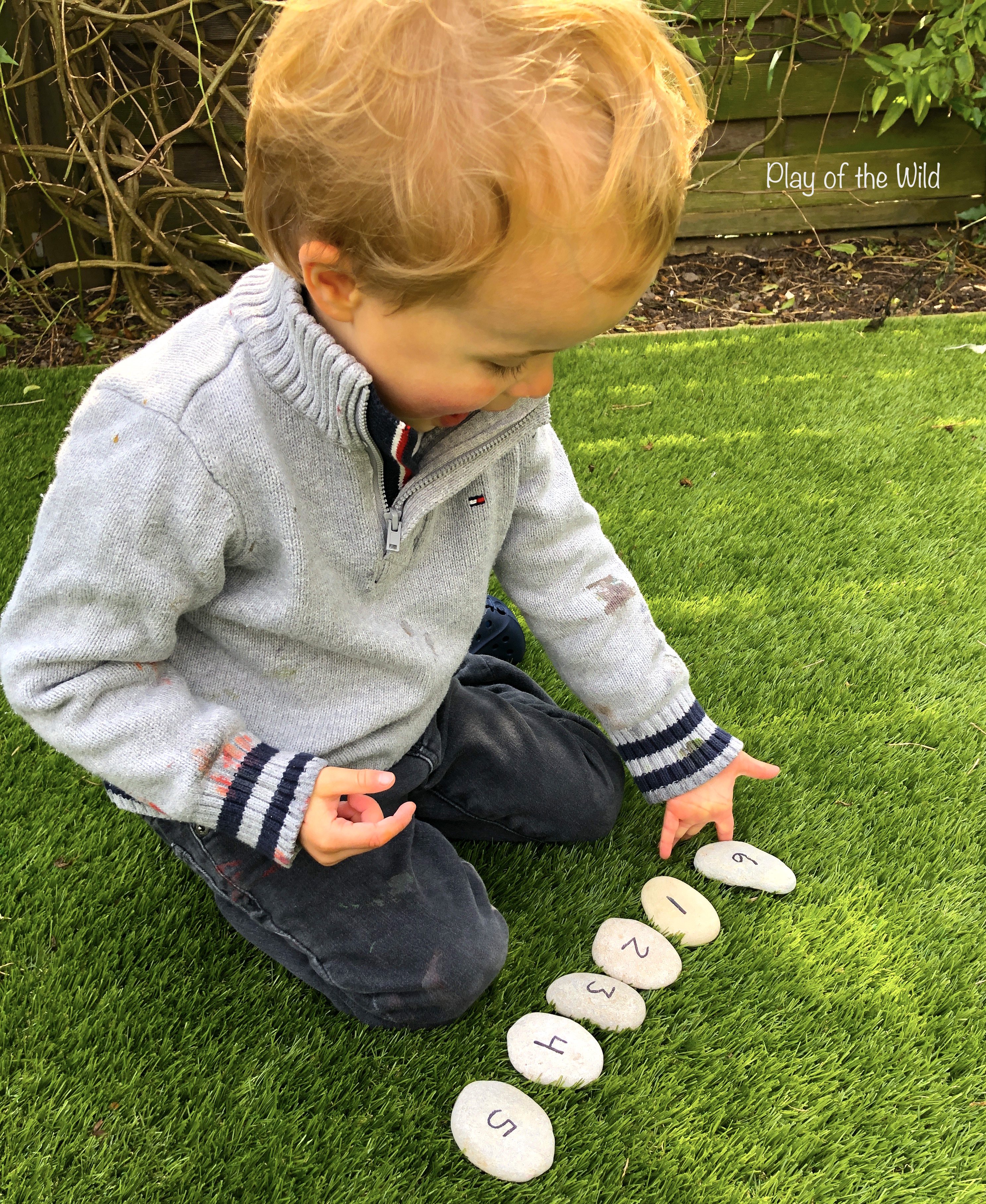
- Free play with numbers – Allow children to play with number rocks or stump numbers in their play. This can lead to finding creative ways to use numbers.
- Hopscotch – Children can use or even help make a hopscotch board. They can practice counting and identifying numbers as they play.
- Nature number line – Hang rope between trees (or along a fence if you are concerned about children running into the rope) and provide pegs. Children can hang up and order numbers to make a number line. They might collect things like leaves to pin up on the line to correspond with the value. What number comes next? How do you know? What is one more than…?
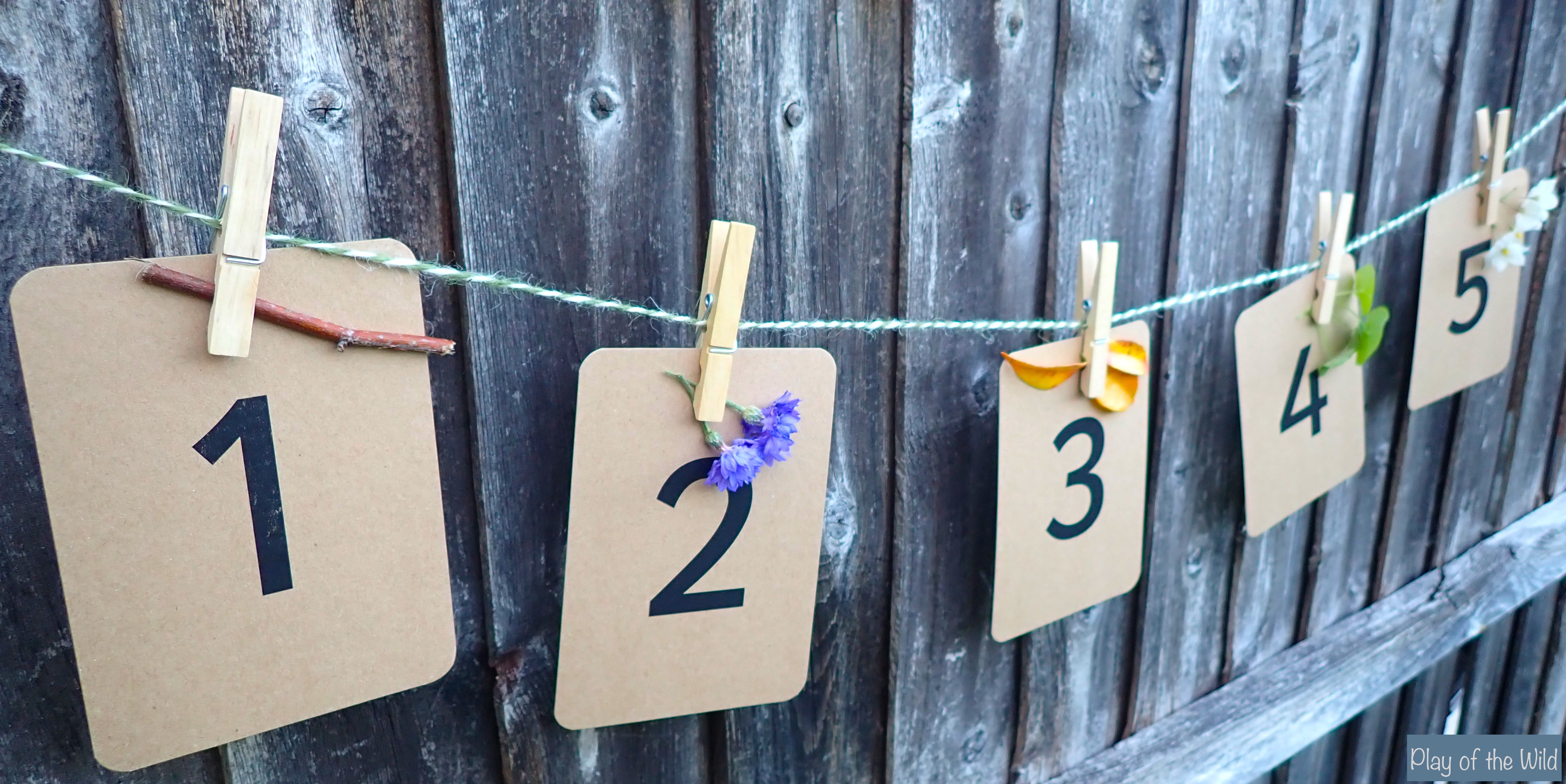
- Minibeast hunt – Children can go on a minibeast hunt counting and keeping track of what they find with tally marks or tally chart. You may want to discuss why tally marks work well for this (rather than writing down numbers). You could come together as a large group at the end and create a pictograph using their findings. How many ladybirds have you found?
Identifying & writing numbers
- Numbers on the ground – Children can play a game of calling out numbers and having to run to stand on that chalk number. To challenge them, you could have them hold up the corresponding value on their fingers. Where is number 4? Can you show me 4 on your fingers?

- Numbered cars and parking spaces – Children can play with cars labelled with numbers and park them in ‘parking spaces’ with a corresponding number, dice value or tally marks.
- Numbers & bikes – In a school with several bikes, cars, etc. for children to ride, they can be labelled with numbers and parked in ‘parking spaces’ with a corresponding number, dice, tally marks or other values. Children can take turns on the bikes, signing their names on a list corresponding with the number of the vehicle, and then using a sand timer to take turns.
- Writing numbers – Children may write numbers in the sand or the dirt with sticks or their fingers. They could write numbers on the pavement with chalk or with paintbrushes using water or trace over numbers written in chalk with water paintbrushes. They could also use sticks, stones or other natural objects to create numerals.


Arithmetic
- One more or one less – If you have a group of objects (e.g. 3 stones) help children find one more or one less of the number by adding in one more or taking one away (and then recounting the pile).
- Number line – Children can write out or make a number line to 10 (or hopscotch) and find one more or one less by counting forwards or backwards. It may help children to count objects to go with each number.

- Skittles or bowling – Children can play games such as skittles or bowling. They can identify numbers on the games, count the number of skittles or targets that are hit, add up points, take away how many objects have been knocked over, and see how many are left. There are lots of opportunities for counting, adding and subtracting with these types of garden games.

- Target games – Targets can be put up (or drawn) on walls, or hula hoops hung up on a line. Children can throw balls, beanbags , ‘ rockets ’, etc. to hit the target or throw through the hoop to score. Alternatively, hula hoops or buckets can be placed on the ground and balls or beanbags can be thrown in to score points.
- Counting crops from the garden – As children pick tomatoes or other fruits or vegetables from the garden, get them to count how many they picked from each plant. Then how many have they picked altogether?

- Sharing crops from the garden – Share (pass out) fruit or vegetables grown in the garden. Discuss ways of making it fair. Can children figure out when it is the same value?
- Tic Tac Toe with sticks – This is a simple strategy game that children can play. They can then go on to play more complex strategy games such as Nim.

Geometry (Shape Space and Measure)
- Shape hunt – Children can go on 2D shape hunts outside. What shape is it? How do you know?
- Shapes made out of sticks, rocks, etc . – Children can copy over ones drawn in chalk or create their own freehand.

- Construction – Children can use large blocks, planks of wood and other construction materials to create large 3D shapes and spaces. What have you created? Tell me about it.
- String shapes – They can use loops of string or large bands to make shapes. They can do this in partners/groups and see how manipulating it changes the way the shape looks or perhaps turn it into a different shape. How can you make a triangle, square, rectangle, etc.? Can you show me different ways to make a triangle?

- Transient art – Children can make symmetrical pictures or mandalas with natural objects .

- Exploring symmetry – They may explore symmetry in nature, perhaps using a mirror to help and even make their own creations (see mandalas above). What do you notice about your picture? If you place this here, is it still symmetrical? Why or why not?
- Nature patterns – Children can also make patterns with natural objects, such as repeating patterns. What comes next? How do you know?
- Dam building / Den building – Children can use materials such as sticks and rocks to build a fort/den, or to block off or dam a stream. This is an excellent opportunity for children to practice estimating length and using spatial rotation to help them construct.
- Trails and obstacle courses – Children can follow trails or make obstacle courses with logs, sticks, stumps, planks, etc. (Supports the use of vocabulary – over, under, through, around, next to, etc. They can use directional language to help each other get through it. )

- Sorting and ordering – Children can sort / order (gradient) natural objects (e.g. leaves, rocks) by a specific feature (ex. shape, size, colour, or other features).
- Music Wall – children and can explore making sounds and patterns with an outdoor music wall.
- Ordering objects by length – Children usually find it easy to compare two objects but may need more practice when comparing 3 or more objects. I have a post – ordering sticks by length , which reviews common misconceptions and ways to help children to learn this.

- Measuring with non-standard units – Children can practice measuring objects with non-standard units (e.g. how many stones long is the stick). This activity is the next step after comparing lengths, but before measuring with standard units such as cm or inches.

- Daily routines – Adults can talk to children about what we do at different times of the day to help them notice the changes in the sun at various points in the day. What do you do at the beginning of the day? At the end?
- Mud Kitchen – Children can practice comparing and measuring liquids, solids, etc. using weight, volume, capacity, etc. Adults can introduce vocabulary such as full, half-full, empty, half-empty, nearly full, etc. Which bowl is largest? Which holds the most? How do you know? Can you fill the cup? Can you make it half-full?

- Sand play and water play – Similar to using a mud kitchen, children can use different size containers in a water table or sandpit to fill and empty containers (including pouring through sieves). It provides opportunities to compare volume and the capacity of different containers. Which container holds the most liquid? How can you find out?
- Potions – Children can make up or follow potion recipes. They can follow instructions to measure (with standard or non-standard units) and combine ‘ingredients.’ They might also compare relative measurements such as full, half-full, empty, etc.

- Weighing scales – Children can use balance scales to compare the weights of different objects. How many nuts are equal to the weight of your stick?
- Ramps – Children can race cars, balls etc. down ramps that can be adjusted at different heights and angles to see how changing the slopes changes the speed and distance they go. Lines with numbers (like a non-standard measure) can also be written along the ground to see how far the cars or balls can go. Children might compare different balls or cars – Which went the furthest? How do you know? Can you try anything else?
- Snail races – See how far a snail can go in one minute. Children can help you think of the best ways to measure the snail’s movement. This activity is also a way for children to help count 1 minute and get an idea of how long 1 minute is.
I hope that you find this list of outdoor maths activities & ideas for EYFS helpful. I have also compiled a list of some of my favourite outdoor maths activities & ideas for KS1 , which you may want to explore for some more challenging ideas.
References – Outdoor Maths Activities EYFS & Outdoor Maths Ideas
Carruthers, E. and Worthington, M. (2004). ‘Young children exploring early calculation’. Mathematics Teaching , (187), 30-34.
Anghileri, J. (2006). Teaching number sense , (Ch. 4, pp. 49-70). London: Continuum.
Arithmetic , Data, Patterns & Sorting , Gardening , Geometry , Maths , Measurement , Natural , Number & Place Value , Preschooler , Rocks , Sticks , toddler
Learning Outdoors , learning outside , Leaves , Mud , numerals , numicon , Nuts , Pinecones , Rocks , Sand , Sticks , Water
2 thoughts on “ Outdoor Maths Activities EYFS – Outdoor Maths Ideas ” Leave a comment ›
- Pingback: Hanukkah Math- Dreidel Math Game for Kids – Play of the Wild
- Pingback: Developing young mathematicians – TeacherTalks
Leave a Reply Cancel Reply
Your email address will not be published. Required fields are marked *
Save my name, email, and website in this browser for the next time I comment.
Notify me of follow-up comments by email.
Notify me of new posts by email.
- EYFS Activity
Sensory Play In The Early Years: 25 Amazing Activity Ideas For You To Try
What is sensory play.
Sensory play involves any activity designed to stimulate a child’s five main senses of touch, sight, smell, hearing and taste. The touch element can also incorporate physical movement along with balance.
There are 5 main senses, although heavily debated that there are more. We discuss movement within the umbrella of touch, sensory play can however be considered as just different textures to squish, pull, and handle. This is only the tip of the sensory iceberg; in this article we delve into why sensory play is important, the benefits behind facilitating exciting sensory activities for your nursery children, as well as equipping you with 25 easy and cheap sensory ideas to try for yourself.
What are the Benefits of Sensory Play in the Early Years?
Think about how we, as adults, process our senses to help us make everyday decisions. Through real-life experience we have been able to use our 5 senses to express certain things like: when there is potential danger (fire and smoke, emergency sirens, unsafe footing); our likes and dislikes (favourite foods and foods that make your stomach flip, certain materials we love or loathe); and finally our senses can spark memories (the smell of certain scent, the scenery of a favourite area). We can use our senses to inform our brain of all of these events due to concrete understanding and knowledge surrounding our senses. Therefore sensory play and activities are vital to helping young children to do the same.
There are countless benefits attached to encouraging children to participate in quality sensory play. Let’s look at some of those benefits!
Independent Play
When enjoying sensory activities, toddlers to school-starters can develop their independent play skills. Learning to explore without the confidence of others can begin to strengthen their likes, dislikes, and interests.
Language Development
Similar to the Curiosity Approach, the use of sensory play can encourage language development through social play. Opening up endless games and activities to play with the sensory equipment, this language can build on everyday discussions and questions between peers and also encourage vital back and forth discussions between adults and children.
Fine and Gross Motor Skills
By 12 months, children are continuing to explore the world with their hands and mouths. They will begin to show a preference for a dominant hand and can begin to hold smaller objects with precision (pincer grip). The use of sensory activities can develop their fine motor skills in a fun, exploratory environment with no expectations. This all eventually builds up towards securing learning skills (such as holding a pen or pencil). A number of touch activities also incorporate balance and movement, developing necessary gross motor skills needed to develop healthy habits with nursery-aged children.
Self-Regulatory Behaviours
Self-regulation can be a difficult task for adults and children alike. It is personal to the individual how they can regulate their extreme feelings and emotions. Some may choose a physical activity, calming music, reading in solitude as well as engaging in sensory activities.
Social Skills
For children to develop holistically, they require regular opportunities to develop socially. This may be with a friend or a small group, and by engaging with sensory play, children can remove intimidation involved in social interactions. By mirroring others’ behaviours and language, sensory play is a perfect opportunity to teach about sharing and cooperative play.
Problem Solving and Abstract Thinking
Wrapped up in messy play, problem-solving can be the underpinning of most sensory play activities. Linking with the Curiosity Approach, open-ended activities (listed below) can inspire all types of games, language acquisition and abstract thinking. Try to highlight on your nursery communication platform the option for ‘Messy play near you’ experiences away from the nursery base.
How can sensory play help SEND children?
Some children can feel overwhelmed when responding to information passed to their brain from their senses. This can be a developmental journey or maybe signs of additional needs (Sensory Processing Disorder, Autism Spectrum Disorder, Visual or Hearing Impairment). Sensory play can help to gently expose children to different experiences linked to their senses as well as being used as self-regulation strategies.
Sensory Processing
Challenges associated with sensory processing can be due to a child having over or under sensitivity to particular or multiple senses. Your role is to ensure your nursery setting is inclusive in culture to support these preferences and needs. It may be that these children benefit from more than a sensory soft play area or sensory table within the nursery, and would benefit from incorporating sensory play into everyday activities.
Social Skills and Speech and Language
Social skills can be particularly challenging for some children who require additional support due to communication and interaction delays or disorders. Using the vehicle of sensory play can allow children to remain in a comfortable activity, whilst introducing the challenge of social interaction and communication. This allows for friendships and relationships to be built.
Mindfulness
Mindfulness can be defined in a variety of ways, it is the process of focusing on the now. Participating in an enjoyable activity such as reading, yoga, sports, painting can help a person to find their flow. Mindfulness is an excellent strategy for those children who experience more extreme emotions as well as those within a typical range. A number of the ideas and activities listed below are ideal for introducing and encouraging mindfulness, which can be used as a calming strategy.
- Email Address *
How does sensory play help brain development?
Sensory play is interesting, engaging and tactile learning and what’s even better is the science behind the use of sensory activities in assisting with children’s brain development. Let’s look at the science behind the play.
When learning with our senses, our brain stores the information in the sensory memory. This is where we begin to process and understand the world, progressing into short term memory and finally into long term memory. When problems are solved and novel ideas are created, this develops cognitive skills. Sensory play strengthens sensory-related synapses and functions which are vital for the development of sensory processing capabilities. This explains why it is so essential to facilitate sensory activities with newborns and toddlers alike.
25 Sensory Play Ideas and Activities
Sensory bins.
Possibly one of the easiest and cheapest activities to create; you will need a large container and a selection of objects with different textures. They can be natural objects (rocks, twigs, leaves) or small toys of different textures. You can fill the bins with water, rice, and cotton wool or leave the objects uncovered. Add a blindfolded element for more sensory exploration.
Sensory Bottles
Sensory bottles are an excellent strategy for both mindfulness and self-regulation. They are made up of water, clear glue, food colouring and glitter, and can be tipped upside down to see the glitter fall slowly down to the bottom. Just be careful to check the lid is tightly glued shut!
Cotton Ball Art
Hang some large pieces of paper onto an outdoor surface (a fence is perfect), dilute water-based paint with water on a paper plate and place some cotton balls in the paint. Your children will aim and fire at the paper, creating an abstract masterpiece whilst exploring sensory textures.
Ziplock Painting
Messy play without the mess! Place blobs of thick paint into a sturdy ziplock bag with a piece of paper inside. Your child will move the paint around with their hands, feeling the squishy sensation whilst creating artwork. Double win!
Giant Bubbles
Hoola hoops or a wire coat hanger are the best for creating giant bubbles. Dip them into a washing up liquid and water mixture, and swirl them in the air. The shiny colours from sunlight bounce off the bubbles creating a sensory feast for the eyes.
Lava lamps or LED lights around a darkened room are excellent visual stimulation for young children, as sight is their first explored sense.
Water Sensory Table
The introduction of a water sensory table is recommended for nursery settings. With a large, deep water tray and different sized containers, children can use funnels and pipettes to collect the water. It is an excellent introduction to capacity in early Maths.
The logic-defying science experiment is perfect for sensory exploration. You will need cornflour and water (you can add non-staining food colouring but take care with regular food colouring as it will stain). Once the water is mixed into the cornflour, the mixture becomes both a solid and a liquid!
Water Beads
Water beads expand when submerged in water, children can place them in water and watch them grow. They are a soft yet slimy texture that can be very calming for them to run their hands through.
Slime can be created a hundred different ways, mainly from kitchen-based products like bicarbonate soda, PVA glue and non-staining food colouring. Research different slime recipes as some slime can be soft and squishy whilst others slimy and sticky, offering a sensory range!
Back to the roots or the ground with this next idea, good old fashioned mud pies. This involves a selection of movements for push and pull stimulation as well as the difference in soil when it is wet and dry.
Following perfectly on from messy play, this activity can promote handwashing habits as well as engage with sensory stimulation. Place some washing up liquid, some non-staining food colouring and water in a blender. This will create soap foam. Lay it in a shallow tray and explore the texture.
Find it Tubes
You can add small objects (sequins, small toys, shells, buttons) into a large bottle and fill it ⅔ of the way with dry rice. The children will shake the bottle to try to find the objects. It can be useful to record which items you put in as you do it to create a checklist for searches.
Ice Cube Painting
Using an ice cube tray, pour different paint into each section. When semi-frozen you can place an optional lollipop stick in for fine motor skills. Using a large piece of card or paper, wipe the melting paint cubes to make an image.
There are studies to support the use of messy play with food and the increased likelihood of a child then trying this food. Away from the dinner table, try mashing and spreading different food to explore textures- if they want to give them a taste, that’s okay too!
Sound Tubes
Creating musical instruments is a sensory treat! Add some dried beans, rice or pasta into different sealable containers. Ear defenders can be used to reduce overstimulation.
Balance Beam
Balance and movement are often thought as additional senses, this very well may be the case! Encompassing in the ‘touch’ category try to develop their sense of balance by using a raised beam or even a ‘beam’ masking taped to the floor.
The motion of swinging can be an act of self-regulation for many children with ASD. Encourage children to safely try swinging in different methods: lying on their belly, being gently swung from side to side.
A firm favourite in nurseries, due to the difference in dry and wet sand textures as well as being able to grab and crush sand between hands and even bare feet.
Tasting Fruit
Fruit can be tangy, sweet or even a little sour. With parental consent, begin to introduce different fruit during snack times. This can be an optional addition or substitute, always make sure they have the safe option of their known snack.
Tasting Sweet Food
Sweet food is often preferred over tangy or sour if you have children with overly sensitive palettes. Try some food where sugars are naturally occurring or limited like some fruits and yoghurt.
Green fingers can stimulate lots of sensory experiences as well as increase responsibility and fine motor skills. Introduce the use of a trowel or other digging implement to further their coordination skills.
Bread Baking
This is an unusual sensory opportunity to interact with both soft and squishy material (dough) as well as the finished product (harder external material). Although this can take longer to complete, this is an activity that offers endless sensory exploration.
Bubble Wrap
Find yourself with bubble wrap you need to recycle? Add paint to the mix and we have a bubble wrap paint party! Your child will need some adult supervision in case the surface becomes slippery. Place a piece of paper or card on a wipeable floor, blob a mixture of paint colours to the page and lie the bubble wrap on top. The children can pop the bubble wrap and make art!
Frozen Toys
Place some small, plastic toys in a beaker of water and allow them to freeze. Your children can explore the different touch feelings of cold and warm. Explore smashing the ice from a height if they enjoy the additional push and pull sensory feelings.
For more brilliant EYFS activities, check out our Ultimate guide to EYFS activities blog post and easily cover the seven areas of learning!
Subscribe to receive expert advice and tips from seasoned professionals in the early years sector.
More like this:
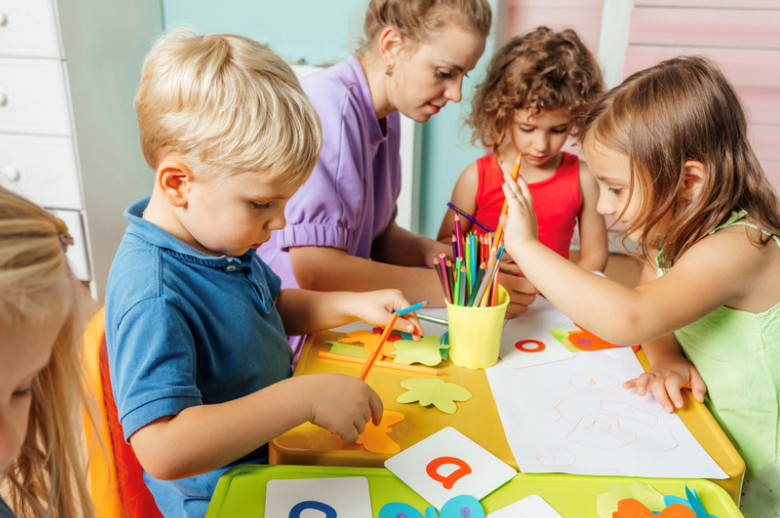
Quality Nursery Management Software.
Nurseries across the UK use Blossom to increase efficiency across their finance, learning journeys, operations & occupancy.
- Testimonials
- Case Studies
- Nursery Cost Savings Calculator
- Nursery Management Software
- BE paid by Blossom
- Recommended devices
- Blossom On BBC
- Privacy Policy
- Cookie Policy
- Help Centre
- Blossom’s Blog
- Accessibility statement
- Early Years Guides

10 Simple Activities to Teach Your Preschooler Problem Solving
By: Author Tanja McIlroy
Posted on Last updated: 9 May 2024
Categories Activities for Preschoolers & Kindergarteners
During the first years of a child’s life, an important set of cognitive skills known as problem-solving abilities are developed. These skills are used throughout childhood and into adulthood.
Find out what problem solving is, why it’s important and how you can develop these skills with 10 problem-solving games and activities.
What is Problem Solving in Early Childhood?
So, what exactly is problem solving? Quite simply, it refers to the process of finding a solution to a problem .
A person uses their own knowledge and experience, as well as the information at hand to try and reach a solution. Problem solving is therefore about the thought processes involved in finding a solution.
This could be as complex as an adult working out how to get out of a financial crisis or as simple as a child working out how two blocks fit together.
Problem Solving Skills for Kids
Problem-solving skills refer to the specific thinking skills a person uses when faced with a challenge. Some problems require the use of many skills, while others are simple and may only require one or two skills.
These are some examples of problem-solving skills for preschoolers , as listed by kent.ac.uk .
- Lateral thinking
- Analytical thinking
- Decision-making skills
- Logical reasoning
- Persistence
- Communication skills
- Negotiation skills
The Importance of Developing Problem-Solving Skills in Early Childhood
Problem solving is a skill that would be difficult to suddenly develop as an adult. While you can still improve a skill at any age, the majority of learning occurs during the early years.
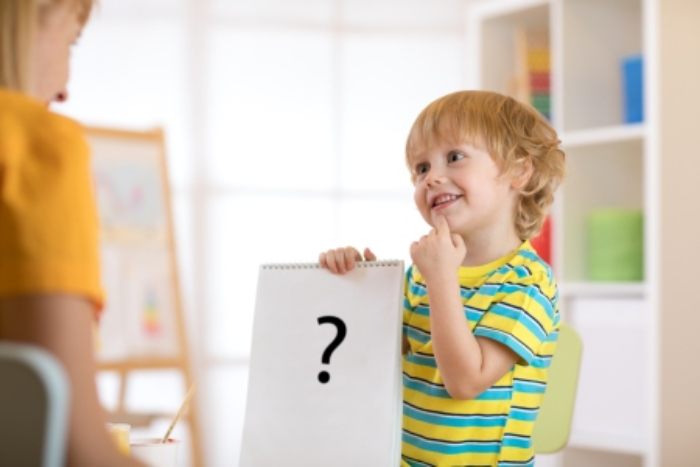
Preschool is the best time for a child to learn to problem solve in a fun way. The benefits of learning early will last a lifetime and the beauty of learning anything at a young age is that it is effortless .
It is like learning to play an instrument or picking up a new language – it’s just much easier and more natural at an early age.
Of all the many things preschoolers need to learn , what makes problem solving so important?
There aren’t many situations in life, at work or at school that don’t require some level of problem resolution.
Child’s play itself is filled with opportunity upon opportunity to solve all kinds of tricky situations and come up with solutions to challenges.
Problem Solving in Preschool
During the foundational years, children are constantly solving problems as they play .
Here are just a few examples of problem solving in early childhood :
- Resolving a fight over the same toy
- Reaching a ball that’s stuck in the tree
- Forming a circle while holding hands
- Making a bridge to connect two block towers
- Tying or untying a shoe
- Making up rules for a new game
- Trying to get the consistency of a mud cake right so it stops falling over
The more creative play opportunities and challenges children are given, the more they get to exercise their problem-solving muscles.
During free play , there are non-stop experiences for this, and parents and teachers can also encourage specific problem-solving skills through guided activities .
Problem Solving for Older Children
During the grades, children experience problems in many forms, some of which may be related to their academic, social and emotional well-being at school. Problems may come in the form of dealing with life issues, such as:
- Problems with friendships
- Struggling to understand something during a lesson
- Learning to balance the demands of sport and homework
- Finding the best way to study for a test
- Asking a teacher for help when needed
Problems will also form a large part of academic life as teachers will be actively developing this skill through various activities, for example:
- Solving a riddle or understanding a work of literature
- Working on projects with a friend
- Finding solutions during science experiments
- Solving mathematical problems
- Solving hypothetical problems during lessons
- Answering questions and completing exam papers
Children who have had practice during preschool will be a lot more capable when facing these challenges.
Solving Problems in Mathematics
Mathematics needs to be mentioned separately as although it is part of schooling, it is such a huge part and it depends heavily on a child’s ability to solve problems.
The entire subject of mathematics is based on solving problems. Whether you are adding 2 and 3, working out how many eggs will fit into each basket, or solving an algebraic expression, there is a problem in every question.
Mathematics is just a series of problems that need to be solved.
What we refer to as problem solving in Maths is usually answering word problems .
The reason many children find these so difficult to answer is that the question is presented as a problem through a story, rather than just numbers with symbols telling you what operation to use (addition, division, etc.)
This means a child is forced to think carefully, understand the problem and determine the best way to solve it.
These problems can involve various units (e.g. mass, capacity or currency) as well as fractions, decimals, equations and angles, to name a few. Problems tend to become more and more complex over the years.
My experience in the classroom has shown that many, many children struggle with solving word problems, from the early grades right into the senior years.
They struggle to analyze the question, understand it, determine what information they’ve been given, and what exactly they are required to solve.
The good news is that exposing a child to regular problem-solving activities and games in preschool can greatly help him to solve word problems later on in school.
If you need one good reason to do these kinds of activities, let it be for a smoother experience in mathematics – a subject so many children unnecessarily fear.
Problem Solving in the Workplace

Adults in the workplace seldom thrive without problem-solving skills. They are required to regularly solve problems .
As adults, employees are expected to independently deal with the frequent challenges, setbacks and problems that are a big part of every working environment.
Those who can face and solve their own problems will go further and cope better than those who seek constant help from others or cannot show initiative.
Some career websites even refer to problem solving as a universal job skill. They also mention that many employees are not good at it.
Again, although it may seem far removed, learning this skill at a young age will help a child cope right into adulthood and in the working world.
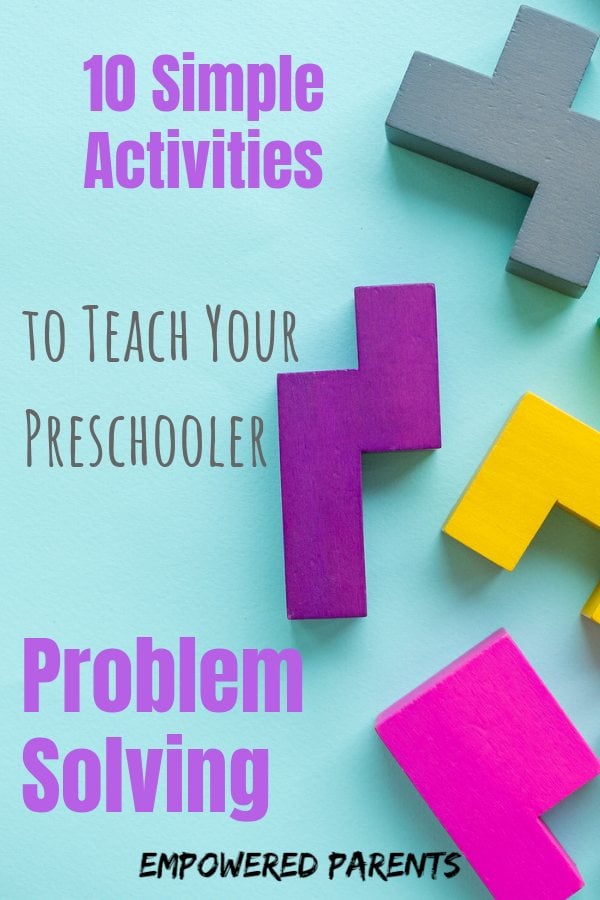
How to Teach Children Problem-Solving Skills
If early childhood is the best time to grow these skills in your young children, then how does one go about teaching them to toddlers, preschoolers and kindergarteners?
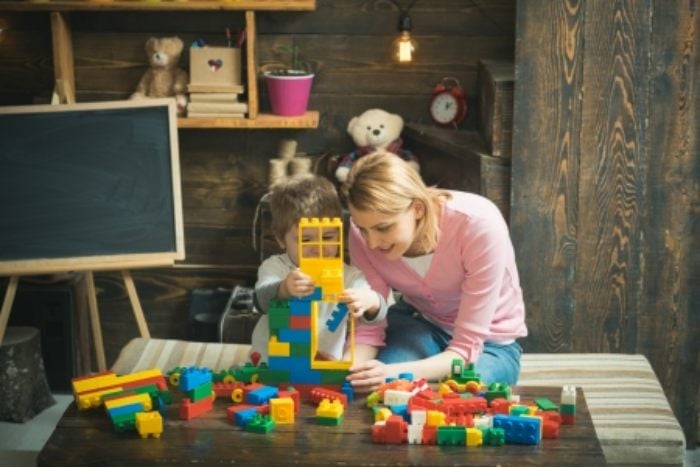
Problem solving can be taught in such a way that you expose your child to various opportunities where they will be faced with challenges.
You would not necessarily sit your 3-year-old down and tell or “teach” him all about fixing problems. Instead, you want to create opportunities for your child to grow this skill .
Using the brain to think and find solutions is a bit like working a muscle over time. Eventually, your muscle gets stronger and can handle more “ weight. ” Your child will learn to problem solve in two ways:
- Incidentally – through free play
- Through guided opportunities provided by a parent or teacher
If you make a point of encouraging thinking through games and activities, your child will develop stronger skills than if you let it all happen incidentally.
Problem-Solving Strategies and Steps
If we take a look at the steps involved in solving a problem, we can see that there are many layers involved and different types of skills. Here are the problem-solving steps according to the University of Ken.
Step 1: Identify the problem
Step 2: Define the problem
Step 3: Examine the options
Step 4: Act on a plan
Step 5: Look at the consequences
Therefore, activities at a preschool level need not present complicated high-level problems.
- A simple activity such as identifying differences in a picture can work on the first skill needed – identifying a problem.
- Playing with construction toys can develop a child’s ability to try various solutions and examine the options when faced with a problem such as trying to find the best way to build something.
- Playing Tic-Tac-Toe would make a child predict the consequences of placing their mark in a particular square.
The most basic of activities can work on all these skills and make children competent solution finders.
How to Teach Problem Solving with Questions
The language you use around your child and your questioning technique will also greatly affect their understanding of a problem or challenge as merely something waiting for a solution to be found .
While your child is playing or when she comes to you with a problem, ask open-ended questions that will guide her in finding a potential answer independently. Use the steps listed above to formulate your questions.
Here are some examples of questions:
- What do you think made the tower of blocks fall down?
- If we build it again, how can we change the structure so that it won’t fall down next time?
- Is there a better way we can do it? If you think of a different way, we can both try it and see which works better.
- Did that work? The tower fell again so let’s try another solution.
Resist the temptation to fix every one of your child’s problems, including conflict with friends or siblings. These are important opportunities for children to learn how to resolve things by negotiating, thinking and reasoning.
With time, your child will get used to seeing a problem, understanding it, weighing up the options, taking action and evaluating the consequences.
Problems will be seen as challenges to be faced logically and not “problems.”
This post contains affiliate links for educational products that I personally recommend. If you purchase through one of them, I earn a commission at no extra cost to you. Read the terms and conditions for more details.
10 Problem-Solving Activities for Preschoolers
Here are 10 simple, easy games and problem solving activities for kids at home or at school. Many of them are the kinds of activities children should have daily exposure to.
Puzzles are one of the best thinking activities out there. Each puzzle is basically one big set of muddled-up things to be sorted out and put back together again. Find out why puzzles are important for development .
Children should have regular exposure to puzzles. They are great for developing thinking skills.
- Four wooden jigsaw puzzles: a fish, a dog, a cat, and a bird
- 12-piece puzzles
2. Memory games
Memory games will develop your child’s memory and attention to detail.
Use pairs of matching pictures and turn them all face down, shuffled, on a table. Take turns choosing any two cards and turning them face up on the table. If you turn over a matching pair you keep the cards and if the pair doesn’t match, turn the cards back over until it is your turn to try again.
Encourage your child to concentrate and pay attention to where the pictures are and try to find a matching pair on each turn.
(Get your own set of printable memory card games here!)
3. Building with Construction Toys
Construction toys such as engineering blocks, a proper set of wooden blocks or Legos (shown below) should be a daily staple in your home.
Everything your child builds is a challenge because it requires thinking about what to build and how to put the pieces together to get a design that works and is functional.
Leave your child to construct freely and occasionally set a challenge and ask him to build a specific structure, with conditions. For example:
- Make two towers with a bridge joining them together
- Build a creature that stands on its own and has 3 arms.
Then watch your child wracking his brain until he finds a way to make his structure work.

- STIMULATE CREATIVITY & IMAGINATION: Kids building toy are designed as 110 piece including the 6 building...
- LEARNING BY PLAYING: The STEM building blocks Kit would help to develop the imagination and creativity which...

- 100 solid wood building blocks perfect for hours (and towers!) of fun
- These building toy blocks come in 4 colors and 9 shapes

- Features a wide range of bricks in 29 different colors, Special pieces include 2 different sets of eyes,...
- Special pieces encourage imaginative building with endless possibilities
4. Activity Books
These activity books are really fun and develop a child’s ability to identify problems and search for information.
- Pomaska, Anna (Author)
- English (Publication Language)
- Handford, Martin (Author)

- Books, Webber (Author)
5. Following Patterns
This simple activity can be played with a set of coloured blocks, shapes or counters.
Simply make a pattern with the blocks and ask your child to continue it. Vary the pattern by changing the colours, shapes or sizes.
This activity will train your child to analyse the given information, make sense of it, recognise the pattern and re-create it.
6. Story Time Questions
Get into the habit of asking questions during your daily story time that develop higher-order thinking skills . Instead of just reading and your child passively listening, ask questions throughout, concentrating on solving problems.
Here are some examples:
- Why do you think the bear did that?
- Do you think his friend will be happy? Why?
- What would you do if you were the monkey?
- How do you think Peter can make things better with his friend?
- If the crocodile had decided not to eat the rabbit, how could the story have ended?
7. Board Games
Board games are an excellent way to develop problem-solving skills.
Start off with simple games like Ludo and Snakes and Ladders to teach the skill of following rules and moving in a logical sequence.
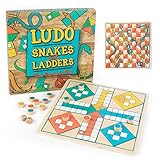
- Double-Header: Enjoy two classic games in Ludo and Snakes and Ladders on this double-faced game board
- Old Classic For A New Generation: Share timeless family games with a new generation of fun, dice rolling...
Card games like Go Fish are also great for teaching young children to think ahead and solve problems.

- KIDS CARD GAMES: Unleash ultimate fun with our Hoyle 6-in-1 Kids Playing Cards Multi Game Pack. Each set...
- GROWTH THROUGH PLAY: Help your children blossom with our social skills games for kids. Each of our games...
8. Tic-Tac-Toe
This is a perfect game to teach decision-making skills , thinking before acting and weighing up the possible consequences.

Use a Tic Tac Toe Board or d raw a simple table like the one above on paper or a chalkboard.

- Wooden tic-tac-toe game board with eye-catching red, orange, blue, and green color pattern
- Includes white-framed wooden board with indented squares for mess-free play, 10 colored x and O game tiles,...
Take turns to add a nought or a cross to the table and see who can make a row of three first.
Your child will probably catch on in no time and start thinking carefully before placing their symbol. This game can also be played with coloured counters or different objects.
9. Classifying and Grouping Activities
This activity can be done with a tin of buttons or beads or even by unpacking the dishwasher. The idea is to teach the skill of classifying and categorizing information by learning with physical objects. Here are some other ideas for categorizing:
- Separate the washing – mom’s clothes, dad’s clothes, etc; or socks, tops, shorts, etc.
- Empty out the cutlery drawer for cleaning, mix all the utensils up and then sort into knives, tablespoons, teaspoons, etc.
- Classify and sort out the toys in your child’s bedroom together – all books, construction toys, soft toys, etc.
- Play category games .
Here are more button activities for kids .
10. Building a Maze
This activity is lots of fun and suitable for any age. It is also going to be way more fun than doing a maze in an activity book, especially for younger children.
Draw a big maze on the paving with sidewalk chalk . Make passages, including one or two that end in a dead-end. Teach your child to find her way out .

- Non-Toxic Formula: Our sidewalk chalk is specially formulated to minimize chalk dust and is safe for indoor...
- Convenient Packaging: Comes in a 20-piece plastic bucket with a lid and handle for easy transport and storage.
As your child gets better at figuring out a route and finding the way out, make the maze more complex and add more dead-end passages.
Are you a preschool teacher or working in Early Childhood Education? Would you like to receive regular emails with useful tips and play-based activity ideas to try with your children? Sign up for the newsletter!
This site uses Akismet to reduce spam. Learn how your comment data is processed .
Friday 3rd of June 2022
hi maam , This Is Uma from India,Can i get this in pdf format or a book. Thank You
Tanja Mcilroy
Monday 6th of June 2022
Hi Uma, thanks for your message. These articles are not available in PDF, but you are welcome to copy and paste them from the website, as long as you add the reference: https://empoweredparents.co/problem-solving-activities-preschoolers/ Thanks for reading!
Wednesday 20th of May 2020
Very very useful content. Good work. Thank you.
Friday 22nd of May 2020
Thanks Ann.
Tuesday 19th of May 2020
Would like to download the free activity pack please.
Hi Kelly, Please download the activity pack on this page: www.empoweredparents.co
- Skip to primary navigation
- Skip to main content
- Skip to primary sidebar
Early Years Careers
How to promote problem solving in the early years
5th November 2015 by Kelly Leave a Comment
Ways to incorporate problem solving in the Early Years
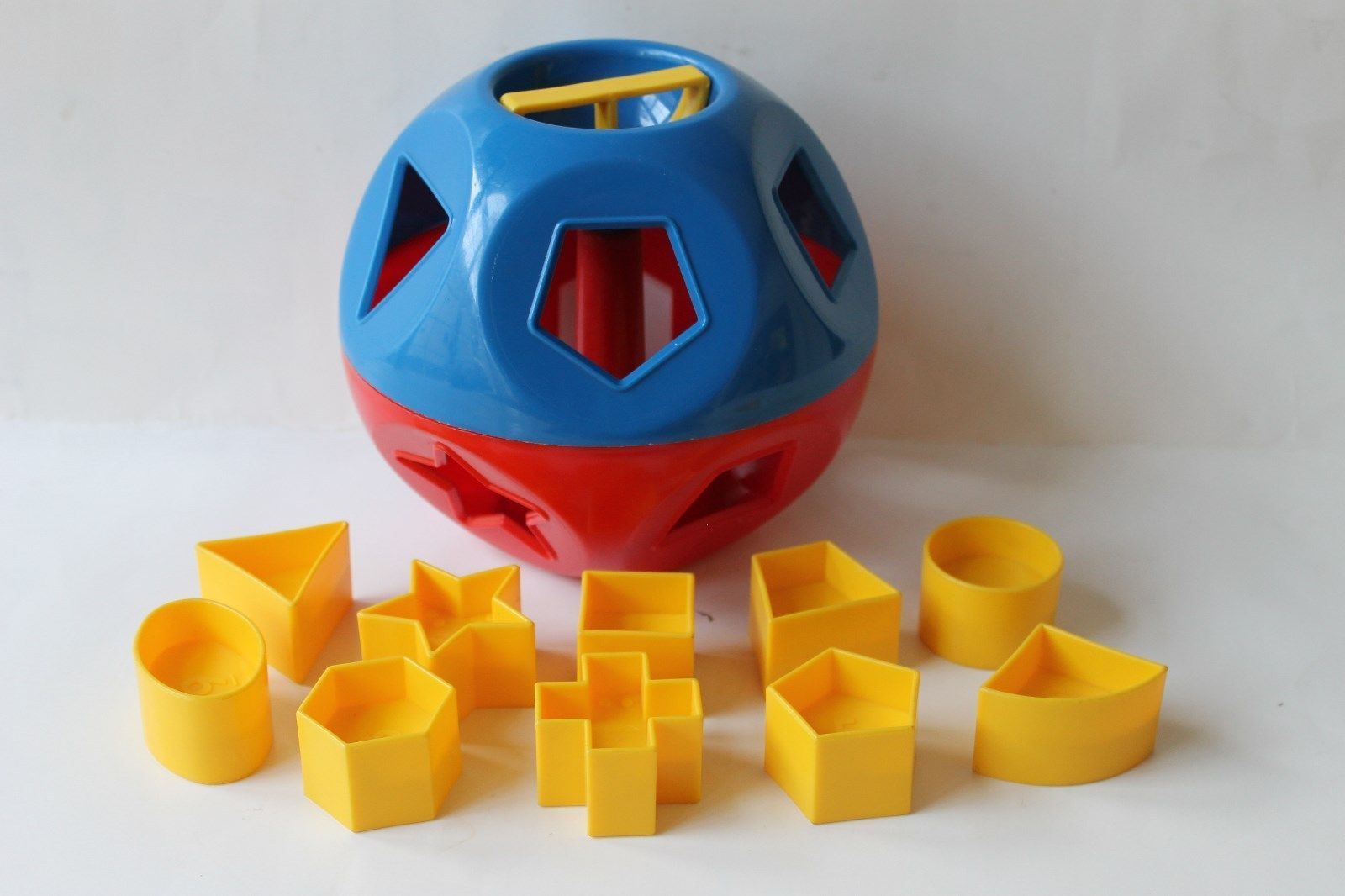
Developing problem solving skills is an area of development early years ’ practitioners are familiar with, and the importance of developing these problem solving skills is well known, but what exactly are problem solving skills? And how do we encourage children to develop these?
Within the Early Years Foundation Stage, problem solving comes under the category Mathematical Development, however this does not limit problem solving to just mathematical circumstances! There are opportunities for children in early years to explore problem solving every day, within all aspects of their development. Children are natural problem solvers from birth, all the way from learning to communicate problems through crying, through learning to talk and learning to walk. They develop a natural problem solving process through trial and error, for example, an infant will fall down many times before taking their first steps, but it’s the process of getting back up and trying again which helps them to achieve their goal.
Although problem solving can occur naturally, practitioners should still encourage children to recognise the process of problem solving and become familiar with it.
Shape sorters are a great activity for younger children to explore problem solving through trial and error. The children can get a feel of the shapes and see the holes, but will not yet have the knowledge of shapes to place the correct shape in the correct hole, they will attempt to fit shapes into holes, and when they realise it will not fit, they move onto the next hole. As the children get older, they can apply their knowledge and learning to this activity, understanding that the square shape will fit with the square hole, thus overcoming a problem. Jigsaws are another effective way of children developing problem solving skills in the early years. With younger children larger puzzle pieces can be used made out of tactile materials and they can attempt to solve the jigsaw through trial and error again. Slightly older children can expand onto smaller puzzle pieces, once they have mastered more simple jigsaws. Practitioners should take note of the different strategies children use in order to fit different puzzle pieces together and offer directional help such as matching the colours of pieces together should a child become frustrated.
Early Years practitioners can help children apply problem solving skills to real life situations as well as various activities. For example, practitioners can encourage children to help set up at meal times, but pose them with a problem of not having enough cutlery for each child. Children could be able to recognise this problem, or be guided by the practitioners to realise that not enough cutlery could pose a problem. Practitioners can then encourage and support the children to think of a solution to this problem. Allow children to use their imagination to solve problems, the sky is the limit! If they suggest sharing cutlery or even crafting their own cutlery out of different items, then this is all part of the problem solving process! They are recognising a problem and attempting a solution.
Overall, there are many activities and real life scenarios practitioners can implement in order to help children explore problem solving skills and guide them to create a solution. Using numbers and mathematics are not the only methods of developing problem solving skills as seen from above, but they can be an effective way to develop learning numeracy skills which can help in later life.
Related Posts:
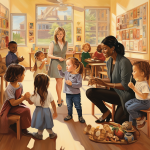
Reader Interactions
Leave a reply cancel reply.
Your email address will not be published. Required fields are marked *

IMAGES
VIDEO
COMMENTS
Our range of EYFS problem-solving activities, and group maths problem-solving activities, are great for helping you find a way to challenge children's maths abilities, whilst appealing to their individual interests. You'll find a huge range of approaches in this varied collection, from circus themes and fairytale themes, to supermarkets and the ...
1) Den-building. Den-building is brilliant for problem-solving as it requires creative and critical-thinking, foresight, and planning. It is also a wonderful way to promote sustained shared thinking with your child. Sustained shared thinking is a way of working together that encourages individuals to evaluate the problem that they are working ...
Teach Early Years magazine is the leading B2B title for early years teachers, practitioners and providers, offering expert advice on educating the 0-5s and operating a sustainable childcare business. ... Providing hands-on maths problem-solving activities across all areas of the setting. Children learn maths through all their experiences and ...
Paper Cards. Coloured Pencils. LEGO Blocks. . 3. Challenge the children's maths skills to solve a missing number mystery. Missing Number Math Activity by Planning Playtime. This Early Years maths game: Write number sequences on craft sticks and remember to leave some blanks in between.
The first article Mathematical Problem Solving in the Early Years pointed out that young children are natural problem setters and solvers: that is how they learn. This article suggests ways to develop children's problem solving strategies and confidence. Problem solving is an important way of learning, because it motivates children to connect previous knowledge with new situations and to ...
This varied collection provides Reception children with a range of fun and engaging activities to test early maths skills all while having fun. We have everything from maths worksheets, chilli challenge games and activities, maths problem-solving games and challenge cards. Find everything you'll need to promote thinking skills with your early ...
This resource includes 12 printable problem-solving EYFS cards that all test young children's Maths abilities.With beautiful illustrations and bright colours, they encourage children to engage in Maths lessons by making learning exciting and relating Maths to real-life situations.Simply print and cut out the problem-solving EYFS cards to create a fun, 'quick-fire' activity that tests them on ...
Maths Games for Reception Class. EYFS Maths Activities - ELG Activity Mats. 4.9 (35 reviews) EYFS Maths Problem-Solving Cards. 4.7 (12 reviews) EYFS Maths Challenges to Support White Rose Maths Alive in 5. 5.0 (1 review) Numbers 10 to 13 Chilli Challenges Pack. Subitise 0-5 Chilli Challenges: Fruity Subitising Snap.
Early Years Activities - Pattern. Age 3 to 5. Welcome to our set of EYFS activities. We have designed these, in partnership with our Early Years Practitioner Partners, to support you in developing the initial building blocks for mathematical thinking, reasoning and problem solving with your children.
3. Reminding. Educators can prompt children to remember and apply a previous strategy to solve a mathematical problem. For example: During welcome time, the teacher asks the class how they can find out how many children are here today, using their self-registration board. "We can count them," says Amrita.
The following are some of my favourite outdoor maths ideas & activities for EYFS (Early Years - Children aged approximately 2-5). For outdoor maths activity ideas for older children, you may want to see my post, Outdoor Maths Activities KS1 . Young children need to be able to manipulate and use hands-on materials to explore mathematical thinking.
Our range of EYFS problem-solving activities, and group maths problem-solving activities, are great for helping you find a way to challenge children's maths abilities, whilst appealing to their individual interests. You'll find a huge range of approaches in this varied collection, from circus themes and fairytale themes, to supermarkets and the ...
These doubling, halving and sharing problems make great activities for your young children. These EYFS maths sharing games are a great way of teaching new skills and reinforcing existing maths abilities. The layout of the sheets makes them easy to understand for little ones. Plus they offer helpful tips on how to support children's contextual understanding. For example, our handy maths sharing ...
Number Trains. Make a train by sequencing the numbers on their carriages. The numbers are represented in a range of formats such as words, numerals, dice dots or counting frames. The levels progress in difficulty. Level 5 has sequences of twos, fives and tens. Free maths problems for children. These activities which display well on an IWB aid ...
Early Years Foundation Stage Activities. Welcome to our set of EYFS resources. We have designed these, in partnership with our Early Years practitioner partners*, to support you in developing the initial building blocks for mathematical thinking, reasoning and problem solving with your children. We know how crucial these building blocks are to ...
The NRICH Early Years resources aim to further develop children's natural problem-solving abilities in the context of mathematics. In her article, Developing Excellence in Problem Solving with Young Learners, Jennie Pennant suggests that there are three main ways in which we can support primary-aged children in becoming confident and competent ...
Wrapped up in messy play, problem-solving can be the underpinning of most sensory play activities. Linking with the Curiosity Approach, open-ended activities (listed below) can inspire all types of games, language acquisition and abstract thinking. ... For more brilliant EYFS activities, check out our Ultimate guide to EYFS activities blog post ...
If we take a look at the steps involved in solving a problem, we can see that there are many layers involved and different types of skills. Here are the problem-solving steps according to the University of Ken. Step 1: Identify the problem. Step 2: Define the problem. Step 3: Examine the options.
The Box Game. Age 3 to 5. In this game, children will use their addition and subtraction skills to keep track of the number of toys hidden inside a box when toys are added in or taken out. The Nrich Maths Project Cambridge,England. Mathematics resources for children,parents and teachers to enrich learning.
Subtraction PowerPoint Game. 4.8 (29 reviews) First, Then, Now Subtraction Stories. 4.9 (21 reviews) Dinosaur Themed Subtraction Worksheet. 4.8 (85 reviews) EYFS Maths Subtraction Challenge: At the Bus Stop IKEA Tolsby/Fiestad Frame. 5.0 (1 review) Subtraction From 10 Cards.
Early Years practitioners can help children apply problem solving skills to real life situations as well as various activities. For example, practitioners can encourage children to help set up at meal times, but pose them with a problem of not having enough cutlery for each child.
Early Years Practitioners. Our Early Years resources will support you as you develop the initial building blocks for young children's mathematical thinking, reasoning and problem solving. Browse this section to find activities for children, the latest articles for Early Years practitioners, and examples of children's thinking.
These activities offer opportunities for children to develop their spatial reasoning. You may find it helpful to read our article The Importance of Shape and Space in the Early Years before taking a look at the activities.. For further support, including a learning trajectory from birth to seven years, please see the Early Childhood Maths Group's Spatial Reasoning Toolkit, which was created in ...